This past fall Microsoft released their second activity tracker, the Microsoft Band 2 – near exactly one year after they released the original Microsoft Band. This new Band tweaks the sizing a bit and cleans up much of the exterior portions with a much nicer curved display. Further, it adds in components like a barometric altimeter and UV sensor. However, beyond that many of the software-layer features remain the same.
I’ve been using the unit since release (one of two that I bought myself), and doing all sorts of fitness activities with it. After all – sports technology is my focus. While I’ll briefly cover non-sports tech pieces, the main point of this review is to cover the fitness aspects of the unit. Thus, my opinions are largely within that light.
Finally – before we begin, it should be noted that I did used to work for the company. I did not work in or anywhere near the Band division. As you’ll see in this post, I just tell it like it is. The good, the bad, and the (really) ugly. It’s the way I roll around here.
Unboxing:
First up, let’s get this thing unboxed. It comes in a few different sizes, but you can further adjust the exact size using the wrist strap.
Once you crack it open, you’ll find the unit sitting up as if it were being presented like a engagement ring. Kinda neat.
Here’s all the parts removed from the outer box:
We’ve basically just got three pieces: First is a USB charging cable/cradle, then some paper quick start stuff, and finally the Band 2 itself:
While it’s unlikely you’ll need it after this post, here’s the quick start guide:
Then we’ve got the USB charging cable. You’ll be using this roughly every other day. It has a small magnet in it, so it holds it nicely in place.
And finally, the unit itself.
Don’t worry, you’ll get plenty more shots of the unit throughout the review.
Weight & Size:
Next, if we plop the unit on a scale, it comes in at 61g:
Which, is exactly the same as the original Microsoft Band:
If you put the units side by side, you’ll notice that the original Band is actually thinner in both width and depth:
However, you’ll also notice above that the sides of the original band are thicker, which made it significantly more uncomfortable. So with the new Band 2 design, the sides are slimmed down quite a bit.
Additionally, they’ve changed the location of the optical HR sensor and charging ports. On the original Band, the optical sensor was near the clasp, now it’s under the display. And the previous charging port has been moved to the clasp:
There aren’t really any other bands on the market with the same feature specs. Meaning, once you add GPS, you tend to transition towards more of a watch form factor. While others have optical HR, that rarely adds significant size to a band. Microsoft’s addition of other sensors (and the larger battery for both GPS and display), makes the unit a bit chubbier than most.
Activity Tracker:
Now that we’ve covered the exterior, let’s dive into the activity tracker piece. This is the component that measures steps, distance walked, as well as stairs and sleep. By default, anytime you press the bigger of the two buttons, it’ll show you your steps:
However, you can then press the little button to iterate through the different metrics for the day. In doing so, you’ll set that metric to be the small ‘default’ one shown next to time.
You can also get this same information by tapping the home screen once the big button has been pressed. In doing so, you’ll now get full screen details of each metric, starting with steps. The blue background is how far towards your goal you are:
The miles, calories, floors, and your current HR:
Your current HR uses the optical HR sensor located on the inside of the device. This optical HR sensor uses two green LED lights to shine through your skin and illuminate blood-flow within your capillaries. In doing so, the sensor in the middle will read that blood-flow and determine your heart rate.
It may take a moment to ‘lock’ onto your HR when the green-lighted sensor first turns on. Once it does, you’re good to go. The unit will track this throughout the day, in 24×7 HR mode.
Though while it may often be on, it doesn’t actually show much detail in your daily charts for the 24×7 HR mode, seemingly only leaving about 1 update per hour:
This is in comparison to Fitbit, Apple, and Basis, which have a much more detailed recording plot.
When it comes to steps, the unit can be setup to remind you to get up and walk at least once an hour. Or, you can customize the frequency (from 30 minutes to 120 minutes) and range of times it’ll remind you:
It was interesting wearing the Microsoft Band 2 and the Vivosmart HR on opposite wrists, as they’d ‘ding’ an hourly step reminder (if I was sitting at a desk for a while) at nearly exactly the same second. So, both seem to track non-movement similarly.
When it comes to stairs, the unit will track that as ‘floors’. Though, I haven’t found it terribly accurate there. Like the Garmin Vivosmart HR, it too gets confused easily – often vastly over-counting my floors. Trust me, I did not walk up 26 floors this day. In reality, by this point in the day I had walked up perhaps 3-4 flights of stairs.
All of the metrics you see are available from within the app, both in terms of a given day’s view, but also in a weekly format too (they are listed together on the steps page, in the lower right corner):
Note that the unit does not dynamically change your daily step goal – but rather just leaves it in place (default is a rather low 5,000). You can manually tweak it however within the app.
Finally, the unit will track your sleep automatically. There is no need to press any trigger to start a sleep, it’ll simply just do it. These metrics are available in the app (or site) afterwards upon waking up:
It also carries with it Smart Alarm functionality, which essentially looks at your sleeping state and determines the least painful time to wake you up, within range of your desired wake-up time. This typically means it wakes you up a bit early. Though it’ll never go past your desired wake-up time.
All of the sleep metrics are also available on the website as well.
Running:
I’ve probably spent the most amount of time running with the unit, compared to other sports. With the Band 2, I’d categorize it as a fairly basic running GPS unit. To start, you can customize what screens you see while running, by going into the ‘Manage My Tiles’ section in the app, then the ‘Run Settings’.
This allows you to specify four data fields per page, up to…well…two pages. The first page is called the ‘Main’, and the second is called the ‘Drawer’:
Once it’s time to run, you’ll hit up the little running man icon on the screen:
From there the unit will look for GPS. In general, if you’re starting from the same place as before, it’ll usually find satellite in a few seconds. However, I’ve found if I go somewhere new (like, far away on a plane), it struggles to find satellite and takes a few minutes. It doesn’t appear to be downloading a satellite EPO (Extended Prediction Orbit) file like most GPS watches do (or if it does, then it doesn’t do it well).
In any case, once satellite signal is found, you can go ahead and start the run:
During the run the default screen will show you the ‘Main’ screen, with what you’ve configured.
Oh – now that we’re going, you’ll see there are actually two ways to wear the unit. One is on the inside of your wrist, and the other is on the outside of your wrist. In the photo below, it’s on the outside of my wrist. However, I’ve spent equal time with both variants, and see virtually no difference in accuracy (they both suck).
However, you can swipe up to the right to get to the secondary screen, the drawer.
Depending on your settings, you’ll see the remainder of the data fields you’ve configured. Such as the HR from the optical HR sensor. I’ll cover HR accuracy within the HR Accuracy section down below.
The unit will automatically trigger a lap every mile (or kilometer). You can pause your run at any time by pressing the action button. From there, you can then also save the run by swiping to the right:
You’ll get a very simplistic run summary page showing totals and averages for the run.
Note that you can do the same indoors, by simply selecting to turn GPS off. When you do that, it’ll use the accelerometer on the unit to determine distance and pace.
Further, the unit does support structured workouts. You’ll find these both from the app and the website:
Unfortunately, I continue to get errors when viewing any of these workout plans (from either iOS, Chrome on Windows, or IE on Windows).
In many ways, the unit makes for a decent GPS running band, but falls short compared to most other GPS running watches in the $100-$130 range from a feature standpoint.
Had the unit accurately measured your HR, or allowed you to connect to a Bluetooth Smart HR strap (it doesn’t), then it might be more compelling as the all-around tracker.
Cycling:
The cycling functionality in the Microsoft Band 2 is pretty basic. You’ll start by tapping the little bicycle icon (which suitably enough appears to be wearing a time-trial helmet).
From there, it’ll go ahead and search for GPS (assuming you have that enabled). Like with running, it usually only takes a few seconds if you’ve been in that area recently (and thus is still cached). Otherwise, it’ll take a minute or so.
From there, you’ll press the action button to start the workout. While riding you’ll get whichever metrics you’ve configured in the data pages as before. Of course, the challenge is somewhat common to wrist watches and cycling, where it’s a bit tricky to see depending on whether you wear it on the inside or outside of your wrist.
Beyond that, it doesn’t give you much data. It doesn’t connect to any cycling sensors (such as Bluetooth Smart cadence, speed, or power meters). And you’ve only got the one data page to swipe to.
When it comes to HR accuracy, it’s all over the map if outside (but not bad inside). But I’ll cover that more in the HR accuracy section. And for GPS accuracy while cycling – no issues there (also covered in the GPS accuracy section later).
In general, I wouldn’t recommend the Band for cyclists, unless you’re just talking about tracking your daily commute across town. In that specific scenario, it actually works quite well since you’re less likely to care about HR data. Further, you can connect the unit to Strava using the Connected Apps functionality (it syncs your workout file afterwards).
However, be warned that the data that Strava gets is low-quality, as it doesn’t give very frequent GPS sampling rates. As such, it’s possible that you’ll miss Strava Segments due to that shorted data.
Gym Workouts:
While there is a focus on running and cycling, I think it may be in the gym that the Microsoft Band 2 handles the best. The platform allows you to download pre-canned workouts to your unit, and then have the unit guide you through those workouts. But – it also allows you to make your own combo dishes of workouts using pre-defined chunks, which is pretty cool. You can do the selection from the mobile app, but because getting screenshots on the PC is quicker/easier, I’ll just show that instead for the creation piece.
First, if you’re simply selecting a workout you’ll filter through the massive list of them to find something you like. For example, for just ones under the ‘Bodyweight’ filter (i.e. not requiring other equipment), there are 52 workouts.
You can filter by duration or difficulty level.
Then, you’ll select to send it to the Band. It takes perhaps 15-30 seconds to complete the transmission.
Once that’s done, you’ll go ahead and start the workout. It’ll show you each step as you go along, with a short one-line explanation of the step. Then it’ll give you time remaining in that step.
It works really well. The only challenge is that it doesn’t give you any guidance on how to do a given exercise. For example, if you selected ‘3-way Calf Raise’, it doesn’t give you any more details on the Band itself on how to do that (both the Fitbit Blaze & Adidas Smart Run GPS do). On the flip-side, the website does give you very clear instructional videos for each one – so that’s pretty cool.
Speaking of the workout creator, you can go through the tool and add exercises from a massive list. Seriously, it must be hundreds and hundreds of exercises long.
It’s nuts how big the list is – and really cool. You then simply add them to your workout.
You can also enable an ‘Advanced Options’ checkbox, which adds even more functions, including intensity and variations. In this case, I clicked on the ‘Intensity’ box for the first exercise, and then was given specific intensity zones.
As you can see – it’s rather impressive. And, as long as you don’t care about your HR in the gym – it’s great.
However, I found that the optical HR sensor was silly-easily fooled by basic gym activities. A pushup and plank both instantly spikes my HR when I flexed my wrists for example. And on top of that, it only records the HR in one-minute intervals while in the gym (and doesn’t seem to send them to all 3rd party platforms either). For example, yesterday I did a bit of a multi-sport workout starting off first with some core work, and then jumped onto the bike. You can see below that the HR recording is so limiting that you really can’t even see the sets in here.
So like I said above – if you don’t care about the HR pieces, then the gym functionality is very impressive compared to the competition (as far as wrist-wearables go). But, if you care about the HR data, or if you’re looking for specific exercise instructional animations – then this might not be the best option.
Waterproofing and related:
The Microsoft Band 2 has a ‘complicated’ relationship when it comes to liquids of any type. Officially, the Band is IPX7 certified, which states it can be placed in water for up to 30 minutes at 1-meter deep.
However, it’s important to note that IPX7 certified devices are rarely swim stroke friendly, as it’s the pressure of the water hitting the screen that causes ingest and breakage (not the mere immersion of it). And in fact, the guidance states not to swim with it.
However, the guidance is also quite contradictory. For example, it states:
“Don’t immerse your Band in any liquid or place it in a washing machine.”
“Microsoft doesn’t guarantee that your Band will operate normally if you use it in water or other liquids. It may be damaged if water enters it.”
Yet there’s also this statement:
“Your Band is intended for indoor/outdoor use in the presence of rain, snow, or brief splashes of water.”
All of which contradicts each other, let alone the IPX7 rating. In any case, my point isn’t to kill it, but rather just to use it while running in the rain (per the above). Unfortunately, that’s not possible. Nor is it possible if you get sweaty or wet hands. To demonstrate, I give you this simple video I shot:

Less you think this is new, this exact same thing happened with the original Microsoft Band. While some touch screen devices (like your phone) are trickier to use with water, that’s not the case with most touchscreen sport/fitness devices. There are countless examples in sport/fitness with touch screens that work just fine with water: Fitbit Surge, Garmin Vivoactive (+ umpteen other Garmin products over the years), and the Apple Watch all come to mind. So this is really just a case of using the wrong type of screen for the job.
Mobile App:
The Microsoft Band uses the Microsoft Health app to sync your data. This app is available on iOS, Android, and Windows Phone. Strangely, it is not available for a Windows PC (as a universal app or otherwise).
In my case, I largely used the iOS app on an iPhone 6. For the most part the app works fine, though I have found that occasionally the phone just won’t talk to the app and you need to re-pair the device to the phone, per Microsoft’s troubleshooting guide on it.
The app is very basic though in terms of data, compared to rivals Fitbit, Garmin, and Polar. You can view your totals from the home page, but it’s somewhat confusing. Basically, it’s showing you a single tile for each ‘activity’ type. Rather than doing so in a chronological way. So up top you see your steps, then calories, then latest run, then latest ride, and below that, latest sleep or workout.
You can tap any of those categories to see the latest data from that category. For example, if I tap the bike, I’ll get my latest ride:
Back to the main portions of the app, along the left side I can choose different functions, such as finding a workout, or selecting apps. As well as managing tiles on my band.
In addition to the semi-limited functions of the apps, you’ll also get smartphone notifications. You’ve got a few choices here. One is that you can get them on a per-app basis (such as have the Twitter app for the Microsoft Band do the notification), or you can just use your smartphone’s notification center. That’s how most smart watches work, and how I set mine up.
I did this because you aren’t given much room for apps (you can only choose a handful at a time), so if I wanted to leave running, cycling, and workouts on my Band (meaning, that functionality is available for me), then I decided to skip on the individual app notifications and just go with the general ones from my phone. Which works just fine and dandy.
The Band will actually quickly iterate through your text messages if you tap the bottom button:

This same functionality (reading out each word) is also possible for things like smart notifications too – such as Twitter notifications.
Health Website:
In addition to the mobile app platform, there’s also a standalone website that’s accessible from a browser. This allows you to see much of the same workout and activity details found on the mobile app, but in a bigger screen format.
The site layout itself is super-clean and fairly easy to navigate. Here’s a look at the steps page for example. You can change the day easily, as well as the format (such as day to week to month).
The same goes for activities, where you can look at an individual activity or trends across them. Here’s a run for example:
If you did a guided workout (such as one in the gym), it’ll show you a list of all the steps you did, and the HR and times for each one. This would be super-cool, except that the list requires a magic decoder ring, which isn’t supplied:
I’d also note that on a pure caloric basic – the pushups were definitely not worth it.
There are also some longer trend aspects. For example, you can pull up your PR’s (‘Bests’) that you’ve had while using the unit.
Note, the one thing you can’t do on the site is to change the options of your Band itself. Rather, that has to be done from the mobile phone app.
Overall, the site is a pretty good basic platform. The single feature that’s missing however, is the ability to export your data. Sure, you can connect 3rd party apps which syncs the data, but as I cover in a few sections, that data is more holey than Swiss cheese.
GPS Accuracy:
When it comes to GPS accuracy, the unit actually does very well – similar to the original Microsoft Band. For example, I can zoom in any virtually any of my routes and find them spot-on with other units.
You can see this for example within Central Park, easily following my route properly. In fact, doing so better than the more expensive Suunto Traverse (in orange):
The Band did suffer slightly in the first 100m before I got to the park as I started in between four 50+ story buildings. But honestly, most GPS units struggle in Manhattan to some degree.
In another run, this one around Newark airport and the surrounding neighborhoods, the unit performed spot-on with the other devices. I saw no deviations from any of the devices compared to my route:
In fact, it most accurately nailed my route going into and out of the terminal (on the below/above maps, the Band is now in orange):
In looking through all of my runs and rides – I really can’t find any cases where the unit deviated. It picks up after tunnels perfectly, and it really does a superb job of tracking. It’s just really too bad that the export functionality to Strava is at a lower resolution, as you can see below where it gets into a super chunky route (I was following the road you see).
But, that export oddity aside, it’s very solid when it comes to GPS.
Optical HR Accuracy:
The Microsoft Band includes an optical HR sensor on the inside of the wrist band, which is designed to measure your HR during both workout activities, as well as in a 24×7 monitoring mode.
To begin, from a 24×7 standpoint, the HR values presented are generally accurate when you open the page to view them from within the band. When it does this, it notes that the HR is ‘locked’. I see no issues when standing/sitting/casual walking/etc in this area, it matches other measurement devices here when viewing it at a moment in time.
However, when looking at HR data over the course of the day, it’s largely useless (just like the Vivosmart HR), due to the low update rate. For example, you can see two screenshots of the data here from the app (frustratingly you can’t rotate the phone to get a clearer view, nor zoom in). On the second day, you can see a workout mid-day. You’ll find your resting HR however, located at the bottom of the sleep summary for a given day (it does not appear to calculate it for the remainder of the day though).
Speaking of workouts, that’s where things get a bit messy. In the running workout mode on the website and app, it doesn’t update more than once per minute to the recorded file. And you can’t zoom in either.
As you can see, that makes it totally useless on analyzing intervals:
Here’s the same run, recorded using a Garmin with a HR strap:
As you can see – the Microsoft Band totally misses the shorter intervals at the end due to the recording rate, and the larger intervals are but a shadow of what they should be.
All of this leaves my job of determining optical HR sensor accuracy tough. So, in order to do that I’ve exported out of Strava, which is the closest I can get to somewhat useful data (and even that is rough, as I discuss in the next section). Now, the challenge is also that not all activities go to Strava. For example – gym workouts do not.
I’m going to compare just three runs out of many, because as you’ll see – it honestly doesn’t matter – variability is high.
First up is an interval run from last week that I mentioned above. In this case I warmed up for about 10 minutes, before increasing pace for 5 minutes to my interval pace. Then I completed 5x800m @ approximately 6:20/mile pace (4:00/KM pace). Nothing too hard, just good lunchtime intervals around the park. Here’s the results:
The above were compared against a chest HR strap (Garmin HRM-TRI), and another optical HR strap (Scosche Rhythm+). Both of those sensors were paired to both Garmin and Suunto devices, and able to record at 1-second rates.
You can clearly see that the Microsoft Band was off by upwards of 20bpm during the first 15 minutes, and then during the intervals it’s kinda all over the place. Yes in theory it tracks for the longer duration intervals – but not the shorter ones.
Next, a run through NYC’s Central Park. In this case, I basically just kept a steady pace for the first 4.5 miles. However, at the point of the major hill, I maintained pace – which dramatically increased my HR.
However, with the above Microsoft Band 2 view, you miss out on all of the details of what I was doing, and honestly, the HR is all over the map with respect to accuracy. Compare it to below with the HR strap. Note that for the most part my HR was fairly stable within a 10bmp range (150-160bpm) for the first few miles. Whereas above, it shows me much higher in that range.
Unfortunately, for that run I can’t actually get the data overlay because I didn’t sync to Strava first.
Next, another run on a colder day in December, just below freezing. In this case I was doing a relatively steady run – so not too much variability. Yet, the unit shows quite a bit of variability in my heart rate. Note that each of those vertical ‘blocks’ is 20bpm. So it’s saying I was floating between 150 and 175+bpm randomly. Which definitely wasn’t the case.
In reality, my HR was very stable, at 160bpm +/- about 3-5bpm for almost the entire run. It never went anywhere near 186bpm. In fact, the peak I recorded was 167bpm – some 20bpm below. Trust me, everyone knows the difference between a very painful 186bpm and that of a more common 160’s.
And for fun, here’s one more. This one is the run I did around Newark – which was again a very evenly paced non-intense effort. The orange in this case is the Microsoft Band, and the pink is the Garmin HR strap. The Band is so far off it’s not even funny.
So what about cycling? Well, it’s sorta in the same camp as running. Due to the low-update rate, you miss much of the important details of spurts or slowing down.
Ultimately, when it comes to heart rate, the Band pretty much fails. Either it’s tracking poorly during an activity, or when it does manage to get that right – then it tracks poorly afterwards in the data.
The whole low-HR plotting is so weird, because it’s completely opposite of every industry trend out there. In fact, I can’t think of a single fitness device in the last 16 years or so that plots/saves the data as infrequently as the Microsoft Band 2 does.
The Dearth of Data:
When it comes to the Microsoft Band and getting data out, it’s not a simple game.
Within the Microsoft Health app you can select to ‘connect’ the workout data from the Band to various platforms. This is similar to what Garmin, Polar, Suunto, Fitbit, and others offer. In the case of the Microsoft Health App, you get the following options:
– Lose It!
– RunKeeper
– MyFitnessPal
– HealthVault
– MapMyFitness
– Strava
– TaylorMade | MyRoundPro
To connect those services you’ll simply tap them and a few seconds later you’re all set. Workouts will now flow to those services as well.
However, as you quickly learn – the amount of data given to those services is incredibly low. In some cases, the receiving platform appears to only receive summary information, such as RunKeeper.
Yet, in other cases the data is severely dumbed down. On the heart rate side, it’s approximately every minute (yes, once per minute). Meanwhile, on the track/distance side, it’s sampled at every 25-meters when exported to Strava and MapMyFitness, far less than virtually every other device ever made with GPS.
Now most (all?) other devices I’ve ever reviewed allow you to simply export data from the platform itself. In other words, take the data out in formats such as GPX, TCX, FIT, or heck, even CSV. Unfortunately, there really isn’t any useful export. The only export you can do (to CSV or Excel) is to simply export the summary information. So basically just a list of your workouts.
Which brings me to the strangest part of the Microsoft Band (and associated platform). While people can have all assortment of gripes with Microsoft as a company or with a product, generally speaking, API’s/SDK’s, and data accessibility isn’t one of them. It’s ultimately the lifeblood of the company. Without it and many partners, it would struggle to offer build-on products. So, ensuring ways to access data is engrained into every employee’s head.
And in some ways, the Band offers that. There’s an SDK available to develop apps for it, for example. However, the SDK isn’t to be used in sport mode (aka workout mode). As per the SDK itself, you shouldn’t sample HR in that mode:
Same goes for RR intervals:
Instead, the SDK is more about the general app experience, and accessing all the other sensors (i.e. skin temperature, galvanic response, UV exposure, etc…). Somewhat ironic given the most familiar metric to everyone is actually just heart rate.
Next, there’s a technical preview available of the Cloud API. This in theory allows you to pull the actual workout files (such as your run, bike, etc… activities). And, there are indeed details on how to do that. However, given nobody has done so yet with full fidelity details, seems to reason that such details aren’t being made available. After all – I know from discussions with these partner companies that they are frustrated by the lack of proper data coming from the Microsoft Band platform.
But, as nice as SDK’s, API’s, and the like are. They are for developers. They aren’t for consumers. And this is where ultimately the Band fails the hardest. As a consumer there is no way for you to download your own workout data from any of your activities. In this day and age, that’s just nuts.
A Few Random Tidbits:
For lack of anywhere else to put these thoughts, I’m just consolidating them in this section.
Battery life: On average I get pretty much exactly 2 days of battery life with it, though, significantly less if I do more than an hour of GPS-enabled exercise per day. While the Apple Watch gets worse battery life (36hrs in my testing), it somehow becomes more natural to charge that unit every night because it doesn’t do sleep tracking. Whereas the Microsoft Band tracks sleep – you want to wear it at night.
UV Testing: The whole UV testing concept is kinda cool, yet kinda odd. Essentially it’ll allow you to use the UV sensor on the back of the wrist band (seen above) to determine how strong the sunlight is. It’s a point in time test, and not something that runs behind the scenes. However, in my testing it never seemed to save the results to the website/app, despite me doing the tests. The idea behind the test is to tell you when you’re at risk for a sunburn. But given it’s a manual test you must do, versus something just happening behind the scenes – it really seems less valuable. After all, most of us get sunburned when we don’t expect it. If we knew we were at risk for sunburn, we typically apply sunscreen.
Apps: While the unit does support apps, I think most will struggle to find much of value in there. In fact, the ‘app store’ is so bad that it doesn’t even give you a description of the apps when you open them up. Just simply a title. And even within that, most apps that are in the store are merely replicating what your phone’s notification center would do anyway. Not to mention the fact that you can only have a handful of ‘Tiles’ enabled on your watch at one time (‘Tiles’ are what ‘Apps’ are actually called). Said differently, this feature has nothing on Pebble/Android Wear/Apple Watch/Garmin Connect IQ, or even Suunto Apps.
Barometric Altimeter: I’m kinda mixed on this one. The altimeter can’t be calibrated, so it makes it slightly harder to use in any ‘real’ scenario like hiking or such. In my earlier tests back in November, it did fairly well. However over time it’s become less and less accurate. That often happens with barometric altimeters if something gets into the air pressure port (salt from sweat being the most common). Which appears to be what’s happened to me after just a few short months.
Golf: While the unit does support Golf functionality, I’m afraid to say I’m not much of a golfer. Sorry!
Comfy-ness: All of this data means nothing if you have problems wearing the device. Indeed, the first generation Microsoft Band was horribly uncomfortable. It was like wearing handcuffs, except without a cool jail mug shot. With the Band 2, Microsoft has improved quite significantly the comfort and feel. However, it’s still uncomfortable to wear compared to most other devices out there. If I was to compare every sport and fitness watch on the market right now, I actually can’t think of a more uncomfortable band than it. And I have an entire drawer full of them. Part of the challenge is the hard plastics used, so while you get really good flex from the sides of the Band, the back and front are much more solid – and don’t bend at all. They’re also fairly bulky (especially the clasp area).
Of course, fit and comfort are entirely personal – but if you’re looking at a Band, I’d highly encourage you to try a friend’s (or at a Microsoft Store) on somewhere and see how it feels.
Market Comparisons:
So, you’re trying to compare the unit against others in the market? Here’s some quick thoughts to help guide you, based on price.
– Apple Watch: The current Apple watch is priced the same ($349 today, however $249 this past fall), however, it lacks GPS. So in many ways, it’s going to depend on what you want. If you want a great day to day smart watch, it’s really hard to beat the Apple Watch. However, it’s not a great standalone fitness watch. It’s better when connected to a phone, but at that point you’re still carrying a phone.
– Fitbit Surge: In many ways it’s similar to the Microsoft Band 2 (for better or worse). Both have GPS, and both have optical HR. And their quality is relatively equal on both (such as not great HR). The Fitbit though feels a bit better on the wrist, but has less overall features than the Microsoft Band 2 – such as lacking all the workout functionality pieces. Further, the Band has far more notification capabilities than the Surge. On the flip-side, the Surge is more comfortable to wear than the Band, and the data quality and export/partners is far better.
– Fitbit Blaze: While not yet out, I know many will ask about it. The Blaze lacks GPS, but instead adds features similar to the Microsoft Band in terms of gym workouts and instructional guidance. It also has the same broad and extensive health platform that Microsoft lacks (such as social features). On the flip side, the Blaze isn’t slated to get the full range of smartphone notifications. So you can’t get things like Twitter or Facebook notifications. For outdoor workouts, you can use your phone paired to the Blaze, which will give you GPS then. But again, at that point you’re carrying around a phone.
– Garmin FR230/235: The FR230 is priced in the same range, while the FR235 is $80 more. From a smartphone perspective both the Garmin unit and the Microsoft unit offer similar functions for things like music control, activity tracker mode, and notifications. However, the FR230 lacks an optical HR sensor (the FR235 has that). Meanwhile, Garmin’s app platform is far more built out than Microsoft’s Band platform with well over 1,000 apps (though, quality ranges quite a bit). When it comes to things like customizing data fields and making it easy to view your data in the middle of a run, there’s no question the Garmin wins. But, if you’re looking for guidance in a gym setting, then the Microsoft Band is a better bet.
Ok, I’m sure there are others that folks are looking for feedback on – just feel free to drop questions down in the comments section. I’ll soon be testing the Moto 360 Sport (my order somehow got return to sender with the post office, so waiting for it to circle back to me). But of course you can find all my reviews using the Product Reviews option at the top of the page.
Summary:
The Microsoft Band 2 is in many ways an incredibly capable device. It’s got GPS in a wrist-band, making it pretty much the smallest mainstream GPS sport/fitness tracker on the market. And it’s got an optical HR sensor, barometric altimeter, and even a UV sensor. It packs plenty of data gathering punch.
However, at times it feels confused. For example, the gym/workout functions are extremely well done. It rocks that category. But then it gets all tripped up with something so basic as the heart rate recording rates (1 minute?) Similarly, it nails GPS accuracy on par with the best GPS devices I’ve tested. Yet it fumbles horribly with heart rate accuracy, even in simple steady-state runs.
The same carries over to the platforms. The website for the Band is very well executed for a company that doesn’t have years of sport/fitness experience. Yet the app (iOS anyways) seems to be less polished. The navigation seems clunky at times, and feels more limited compared to the very capable website.
For day to day use, the Band works well – I don’t think anyone would question that. The challenge is how it competes against competitors. It’s neither a great smart watch with lots of app possibilities (e.g. Android Wear or Apple Watch), nor is it a great fitness watch with lots of functionality there (e.g. Garmin, Suunto, Polar). It’s just sorta like the middle child. The good news is that aside from the optical HR sensor and comfort pieces, I feel like Microsoft could improve much of the functionality with the platforms behind the scenes. If they can do that – it could be a very viable competitor in the future.
Found this review useful? Support the site! Read on!
Hopefully you found this review useful. At the end of the day, I’m an athlete just like you looking for the most detail possible on a new purchase – so my review is written from the standpoint of how I used the device. The reviews generally take a lot of hours to put together, so it’s a fair bit of work (and labor of love). As you probably noticed by looking below, I also take time to answer all the questions posted in the comments – and there’s quite a bit of detail in there as well.If you’re a fan of Amazon, you can pickup the device there and it helps support the site! It doesn’t cost you anything extra, yet helps here a bunch. If you’re outside the US, it should automatically find the right Amazon country for you – but you can always use the big Amazon country links on the right sidebar if so! Oh, and in the future if you just click that Amazon logo before buying anything else (like laundry detergent or toilet paper), that supports the site too!
And of course – you can always sign-up to be a DCR Supporter! That gets you an ad-free DCR, and also makes you awesome. And being awesome is what it’s all about!
Thanks for reading! And as always, feel free to post comments or questions in the comments section below, I’ll be happy to try and answer them as quickly as possible. And lastly, if you felt this review was useful – I always appreciate feedback in the comments below. Thanks!


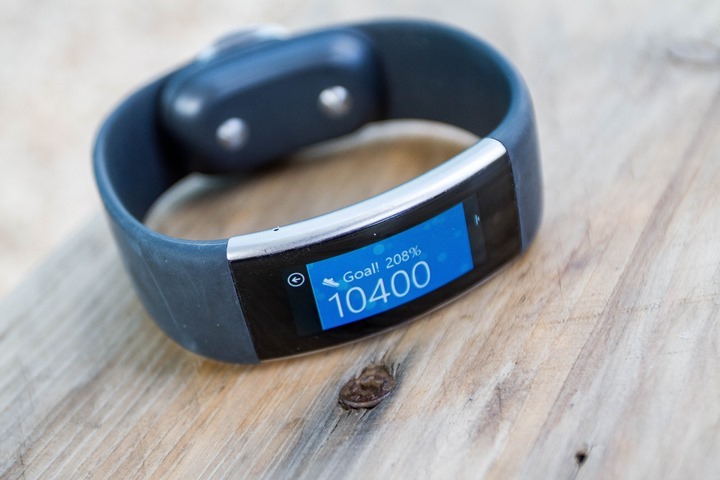

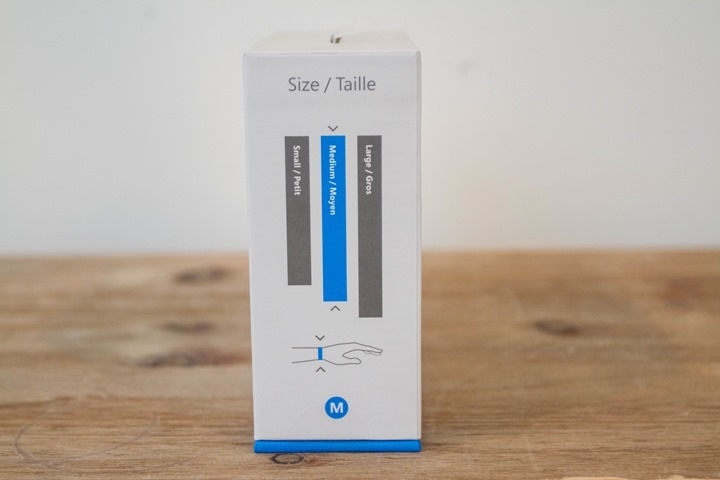
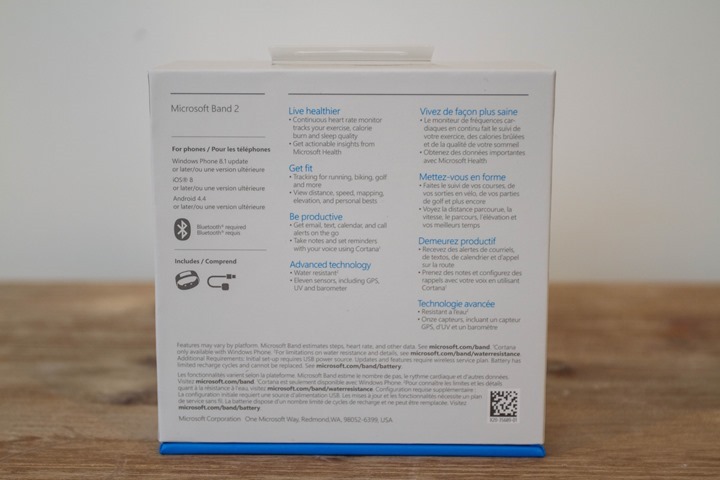
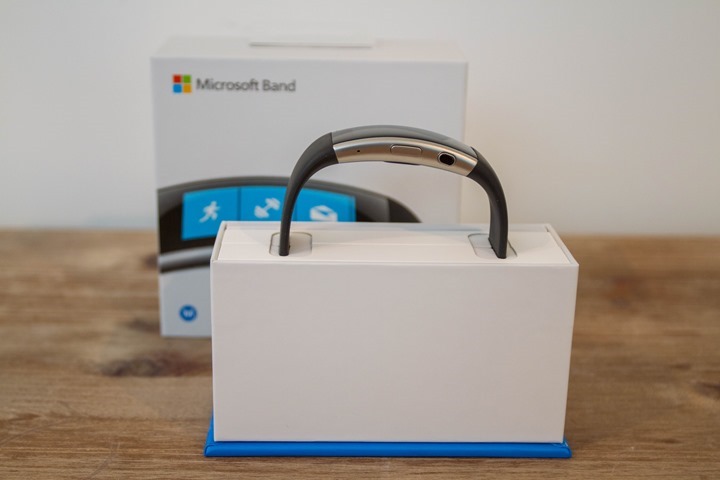
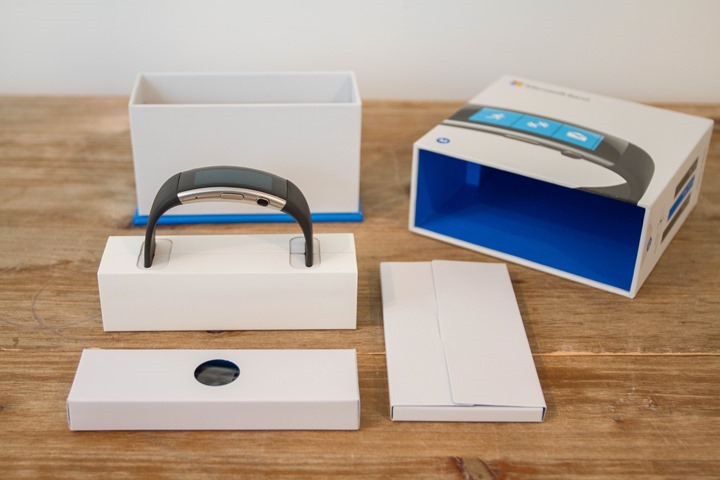
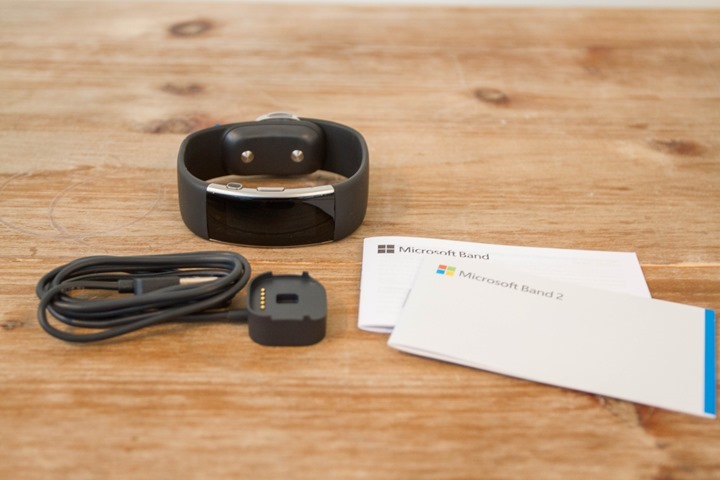
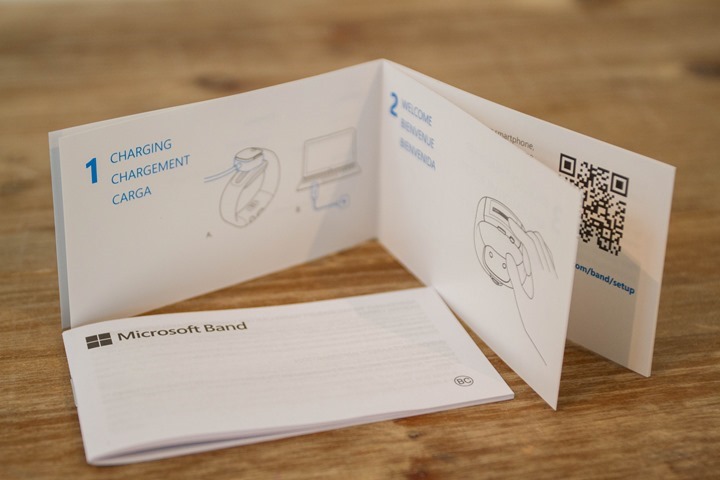
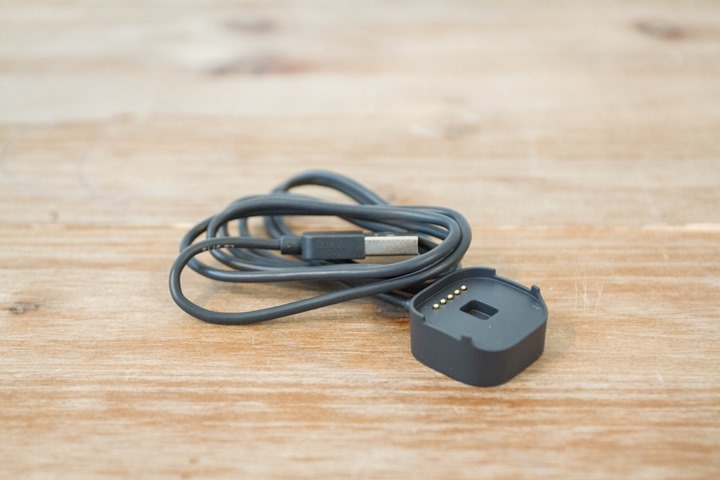
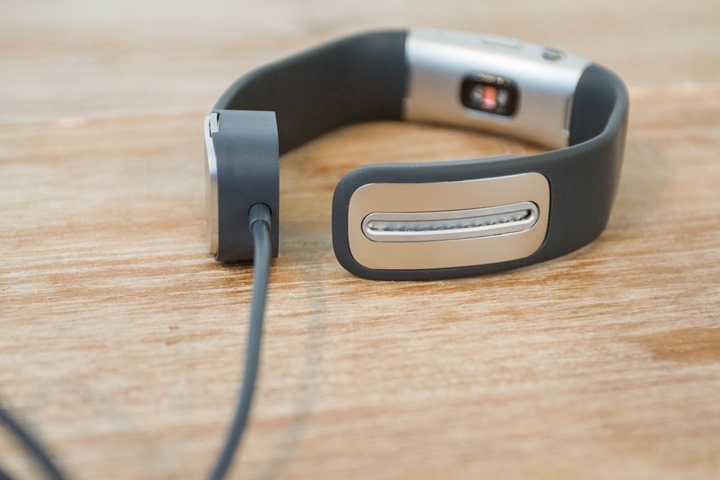

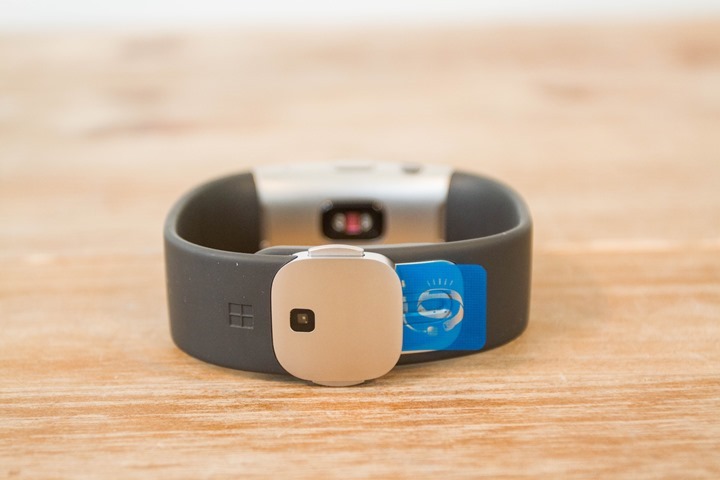
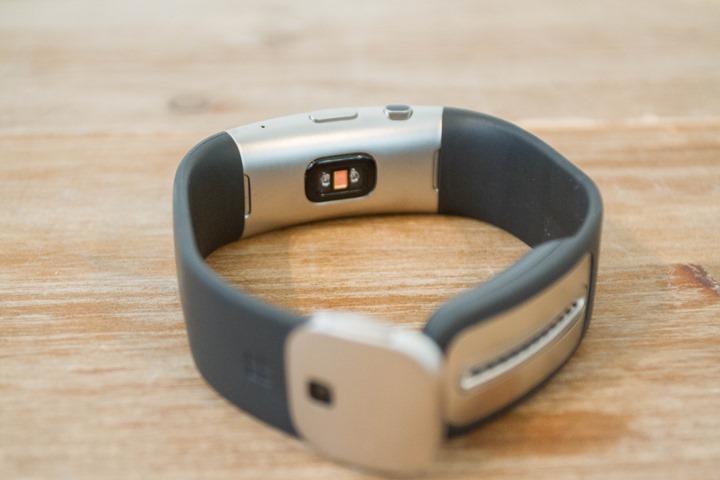
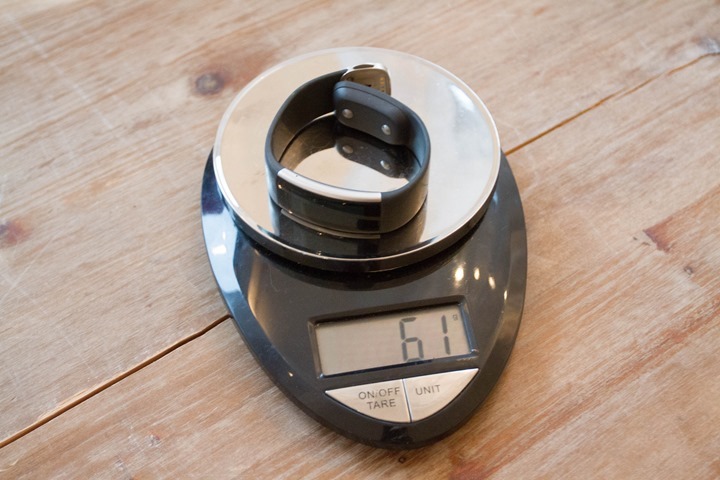
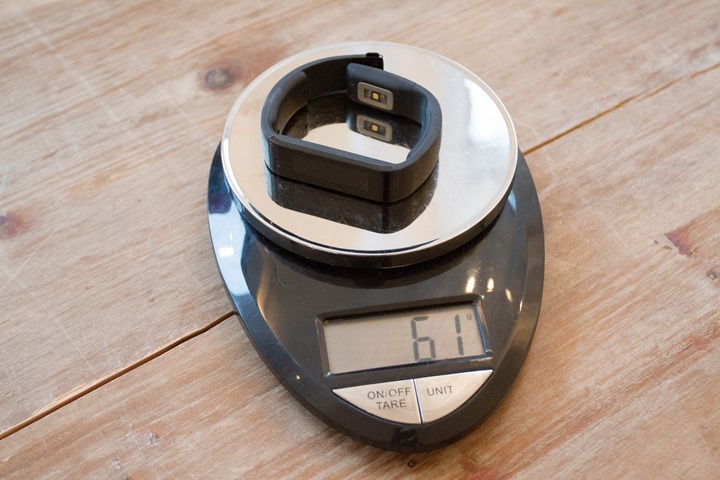
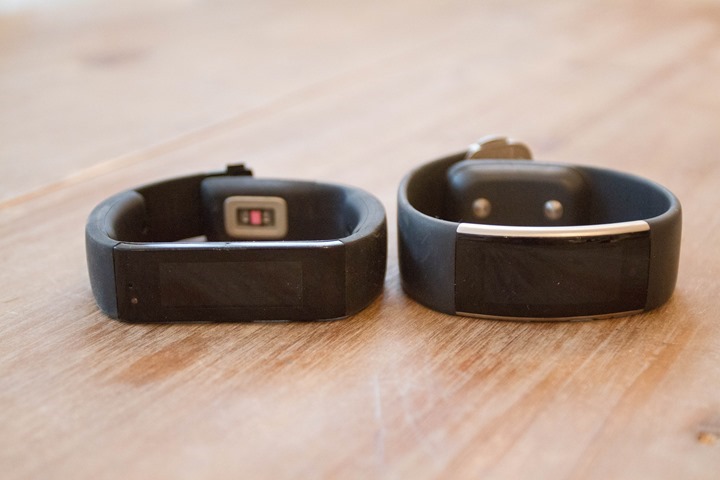
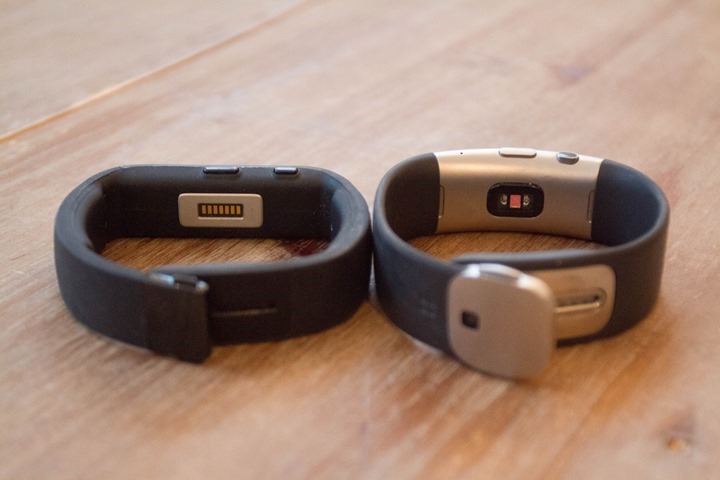
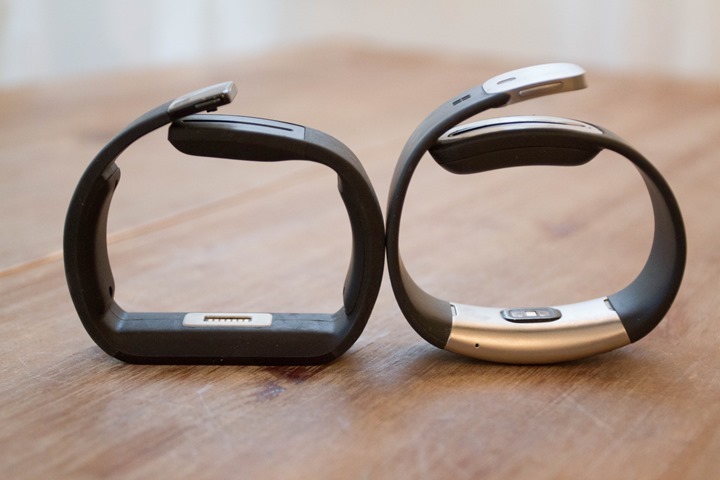
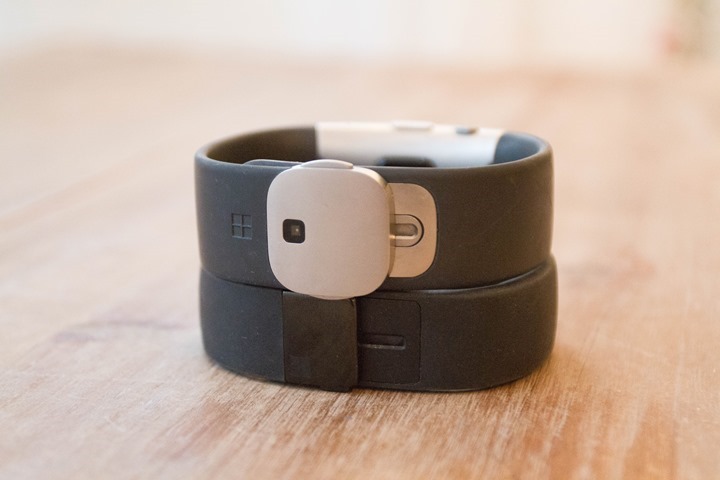


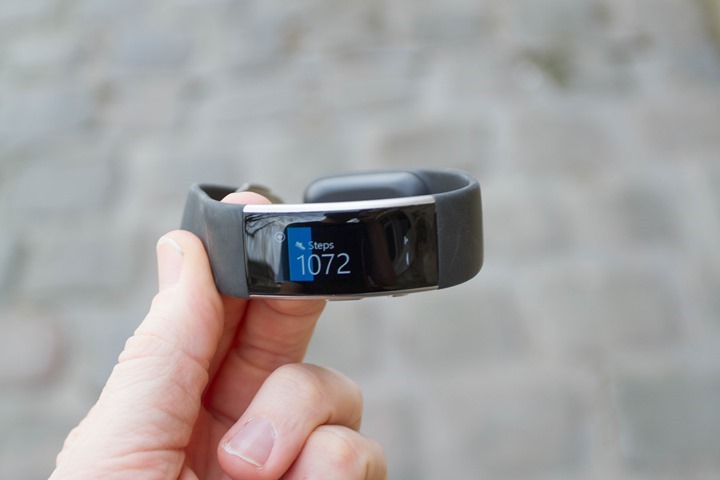

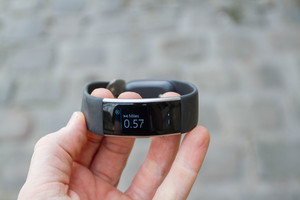
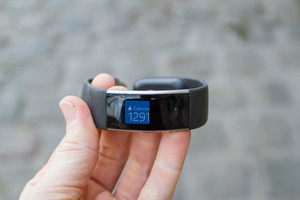
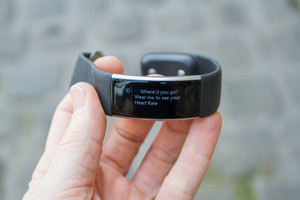
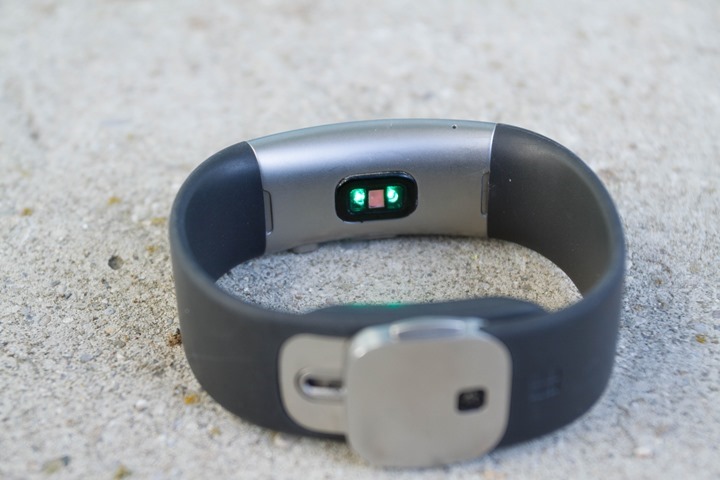
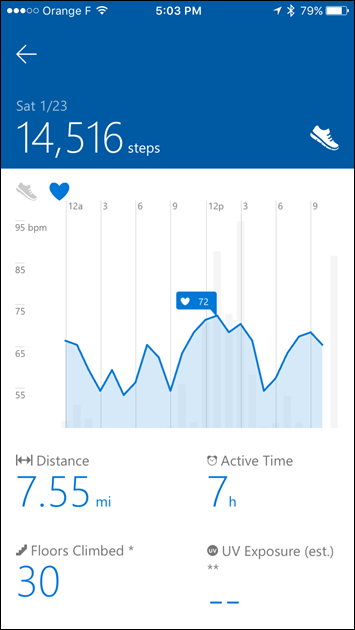
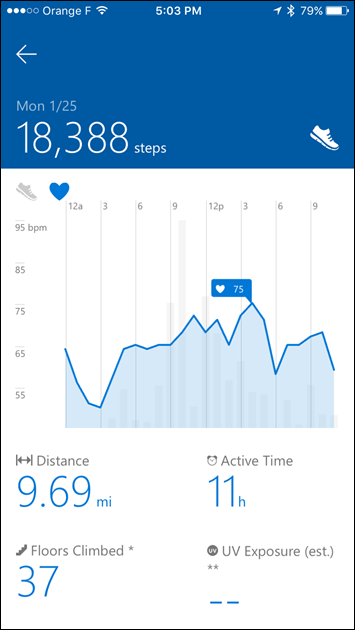


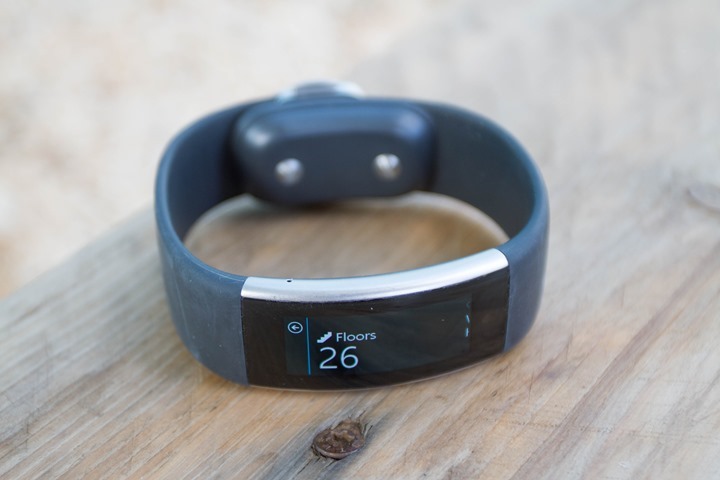
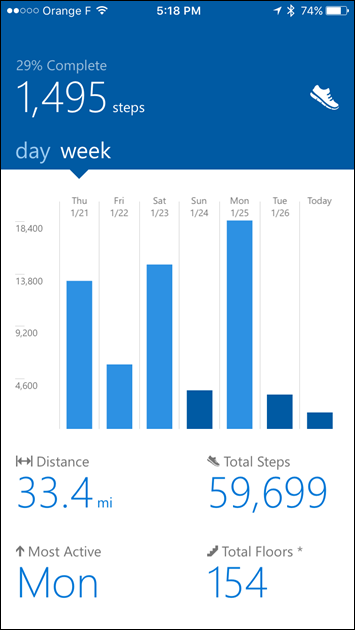
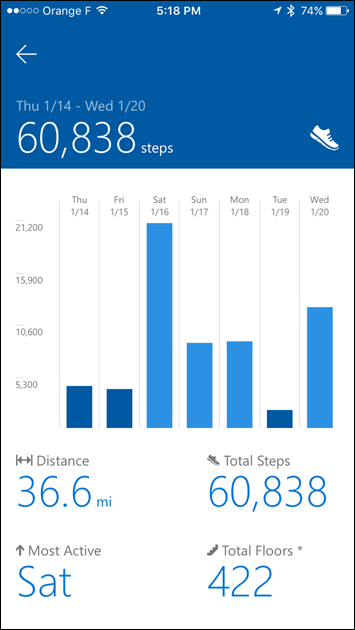
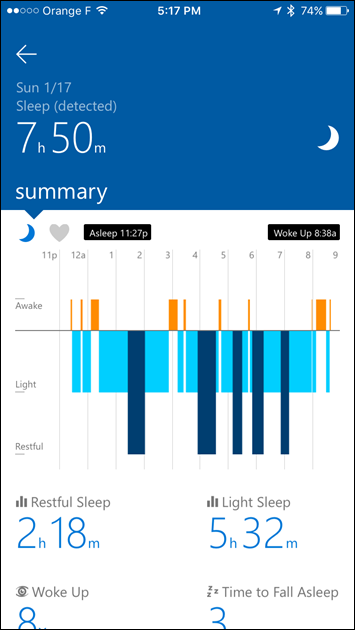

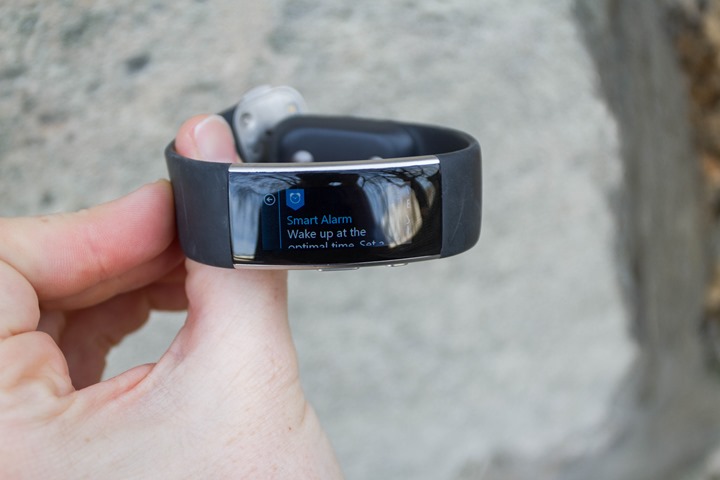
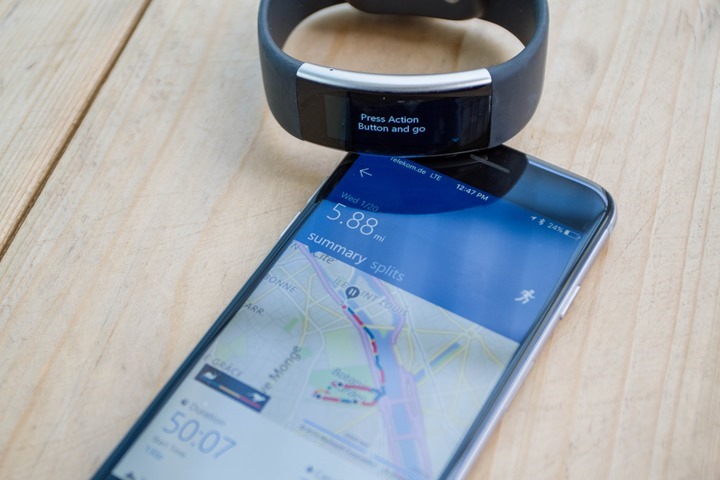
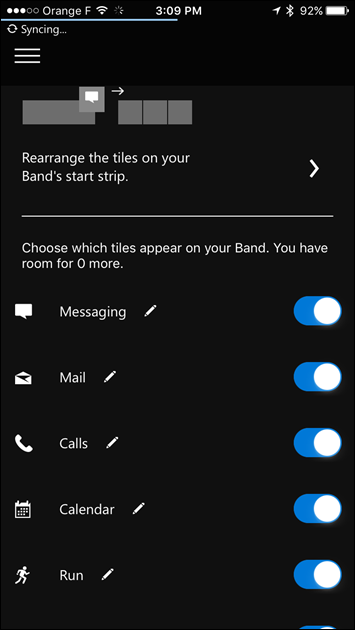

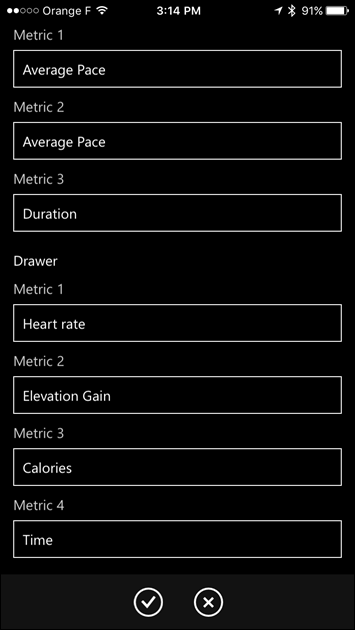
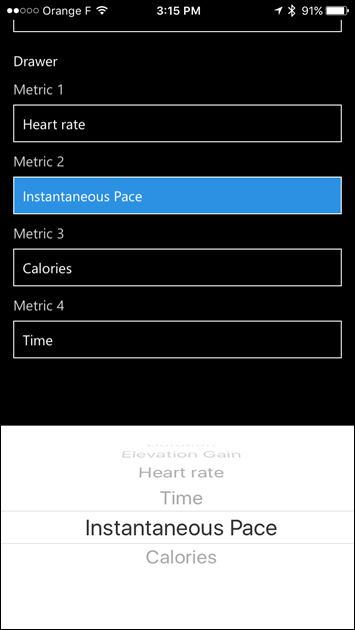
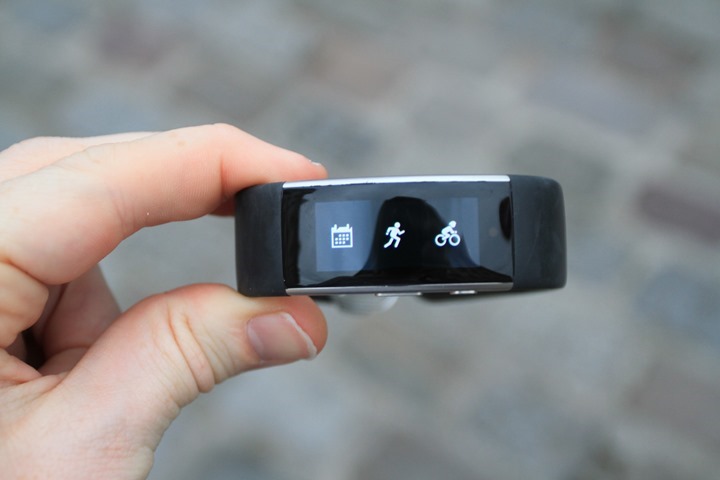
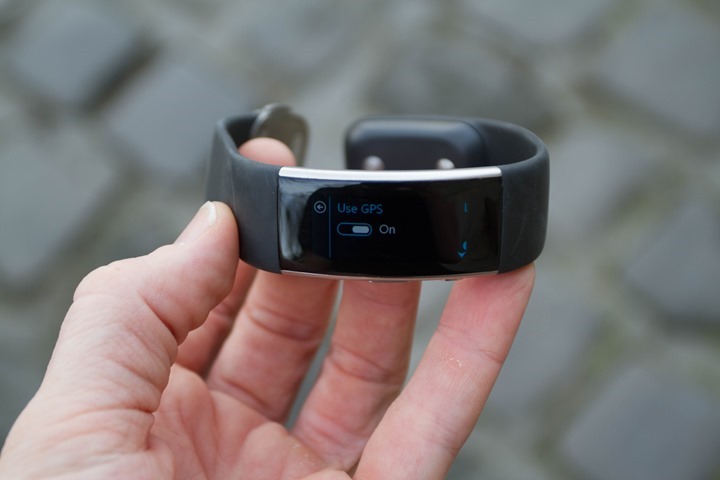
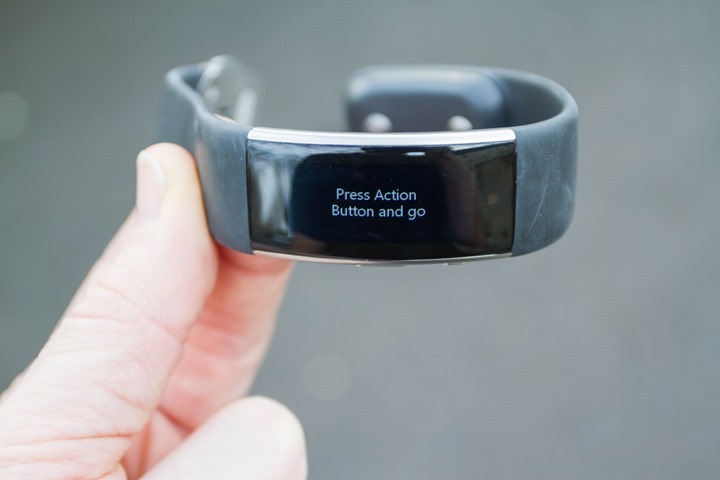
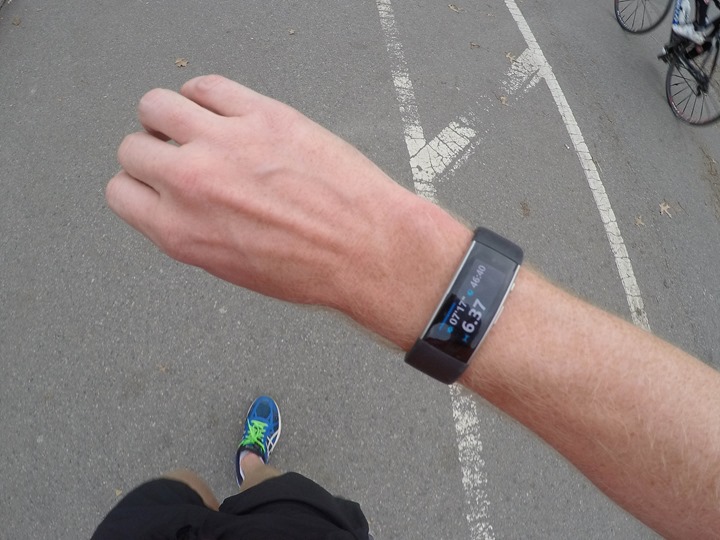
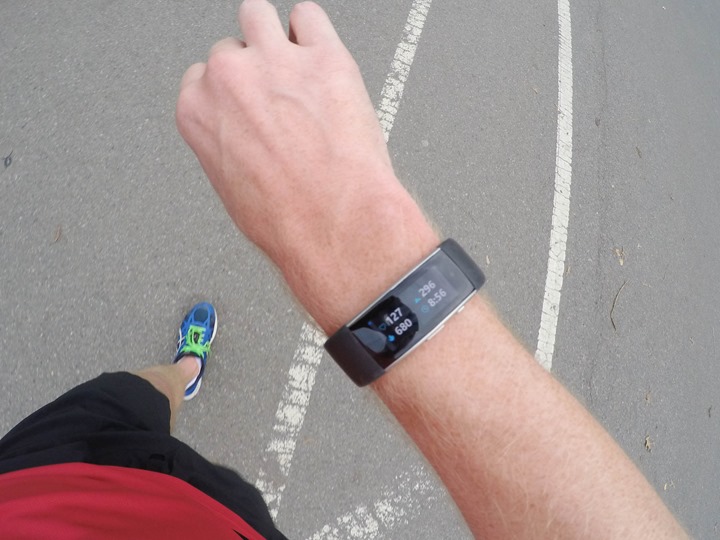
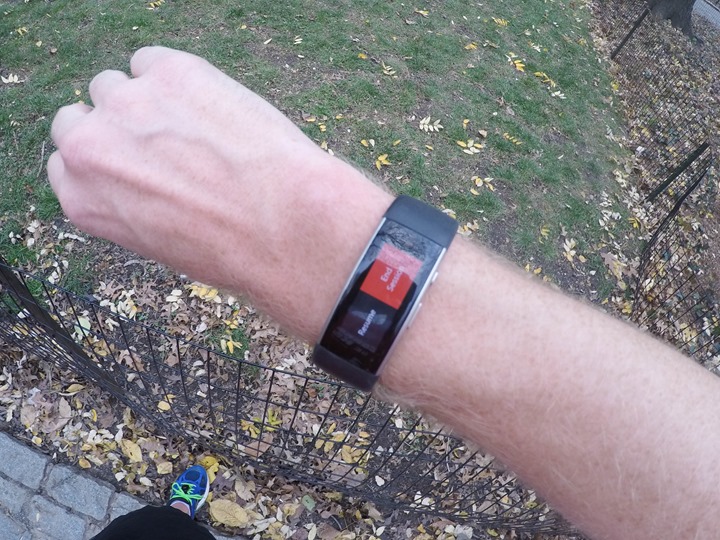



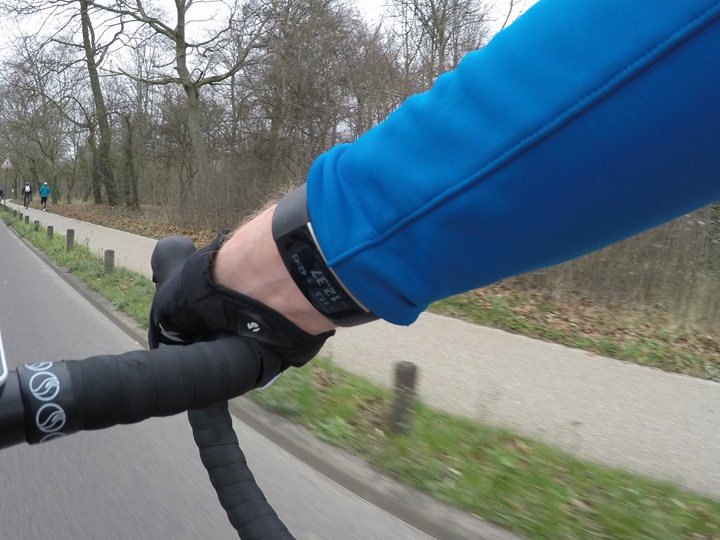
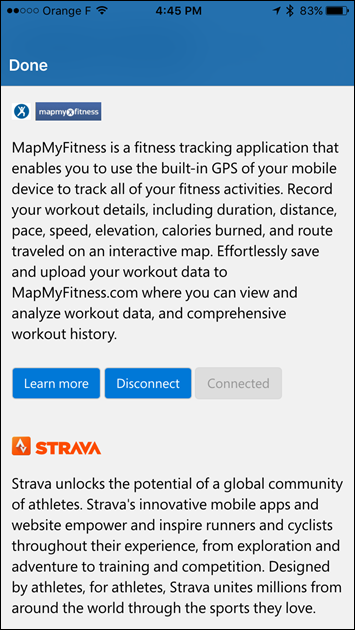

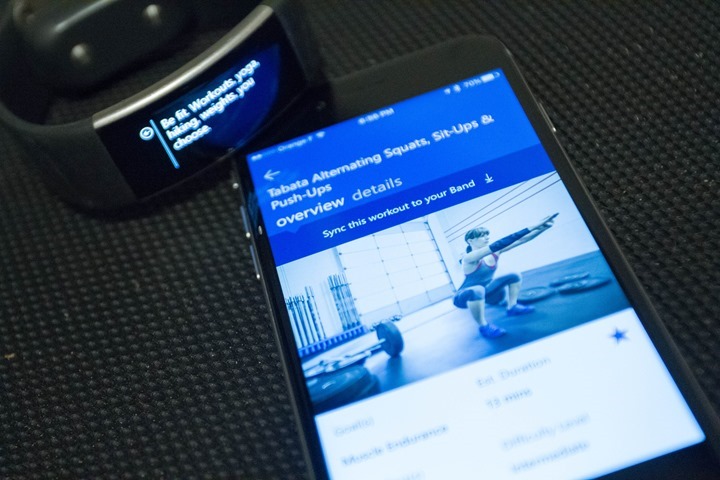
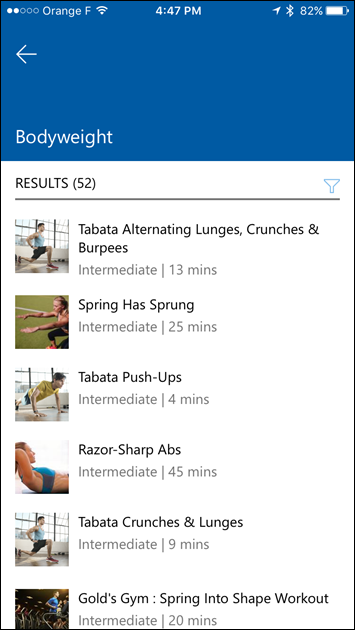
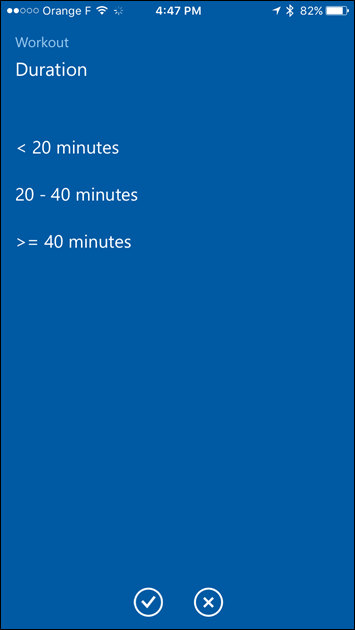
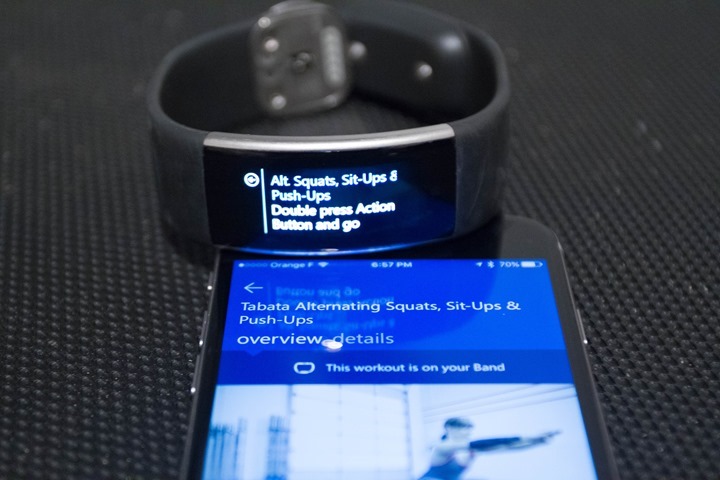








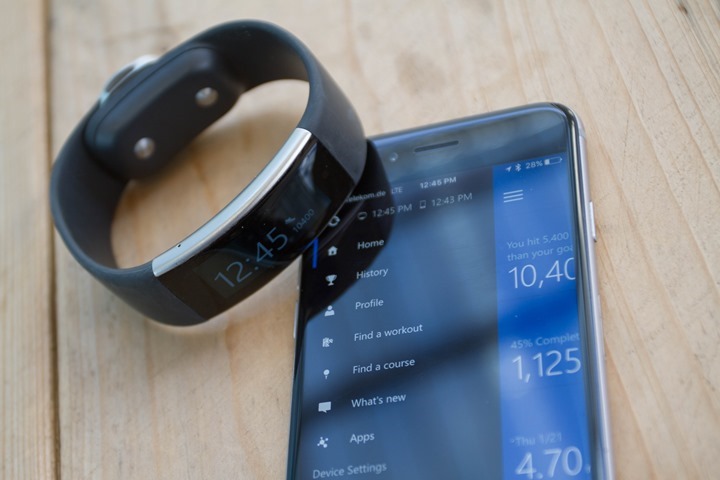
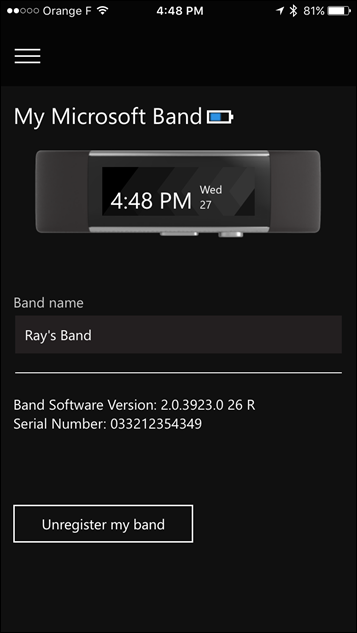
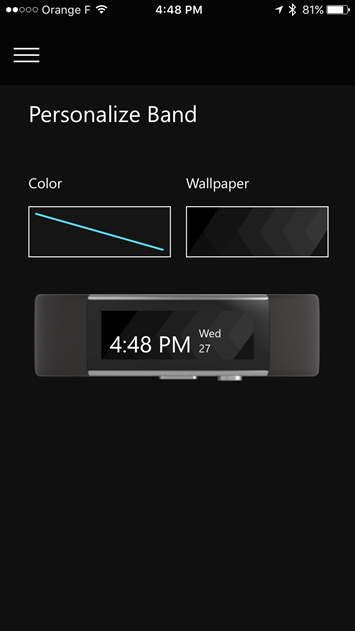
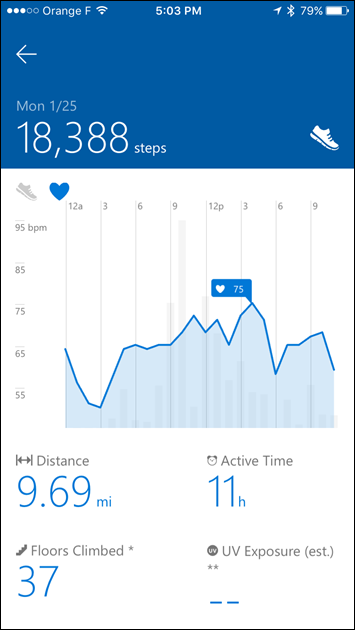
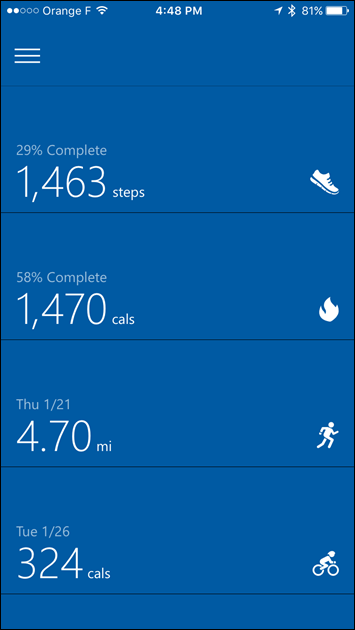
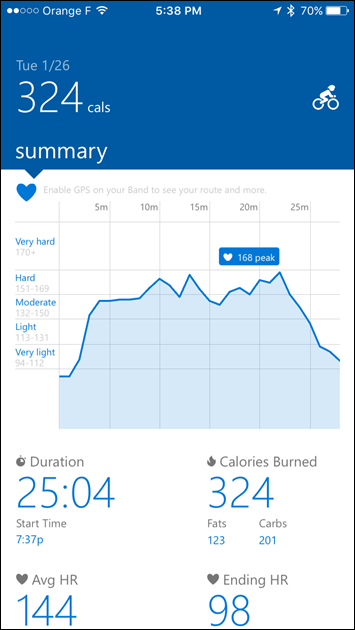
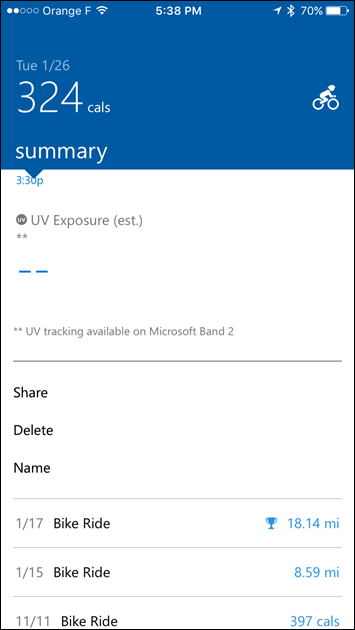


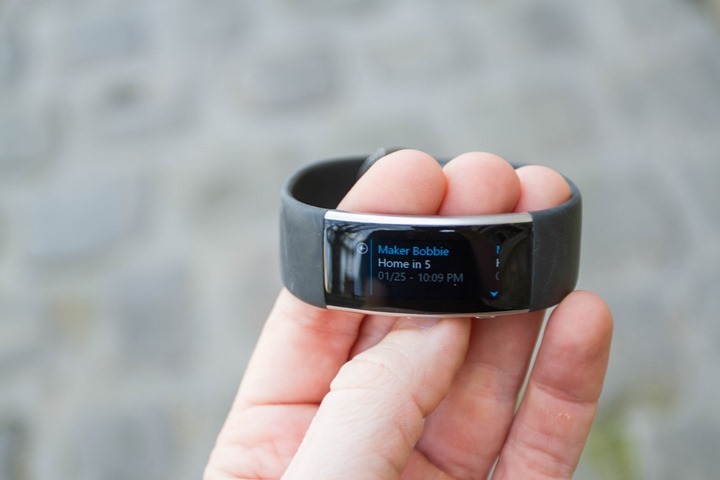



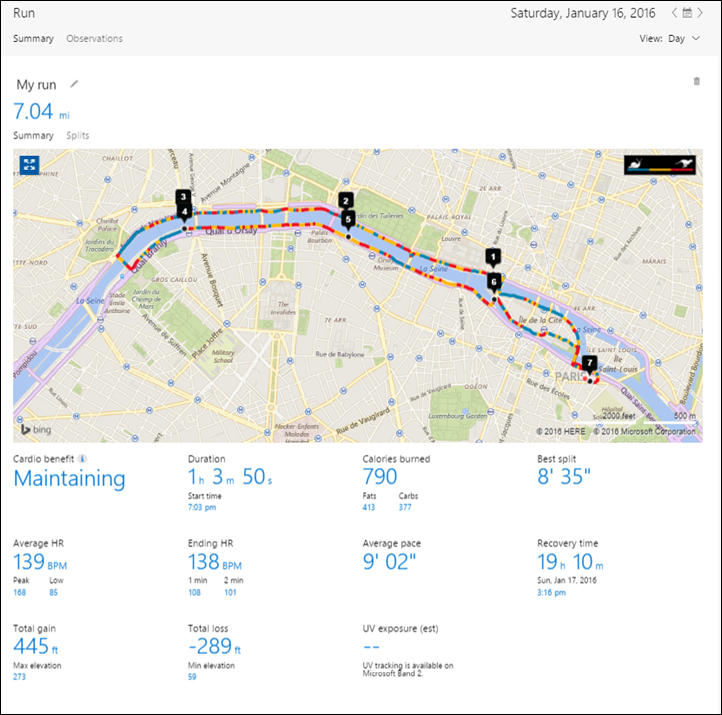

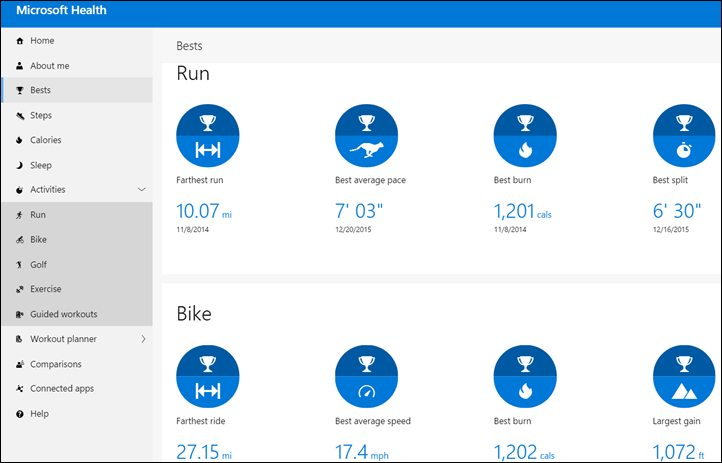
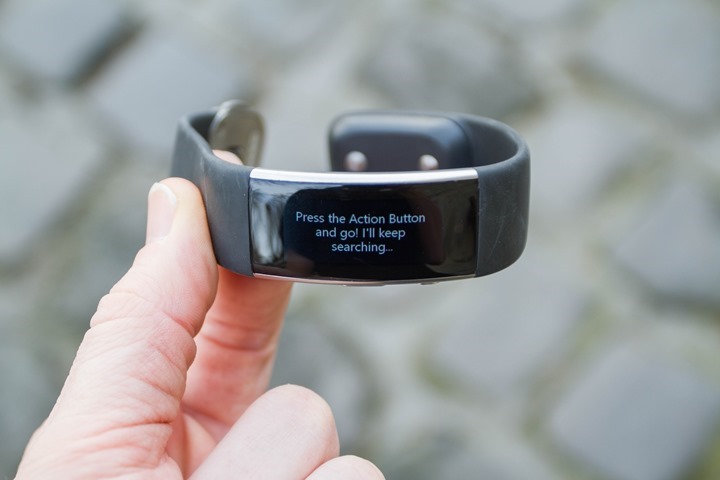
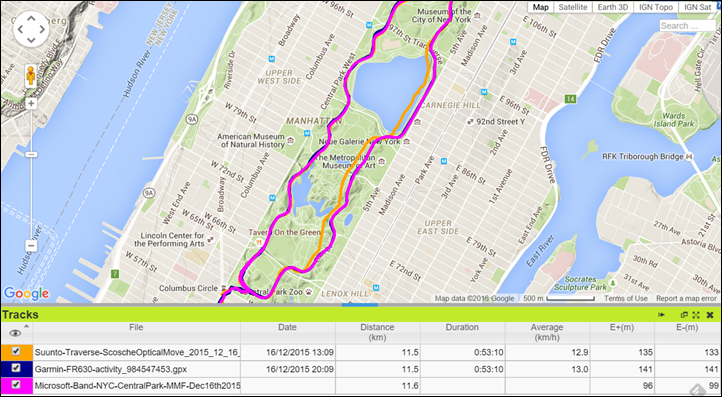
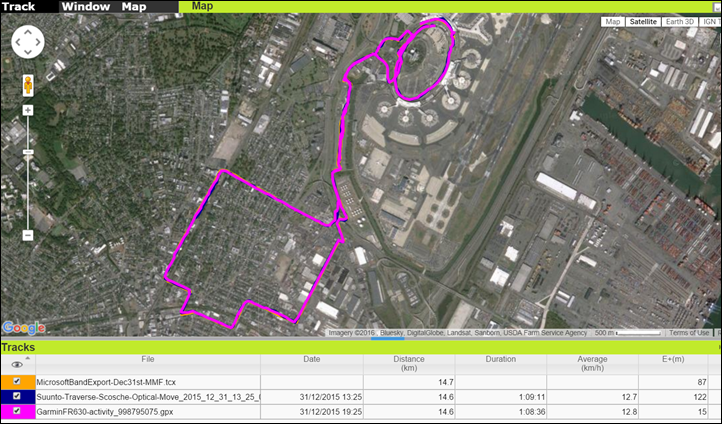
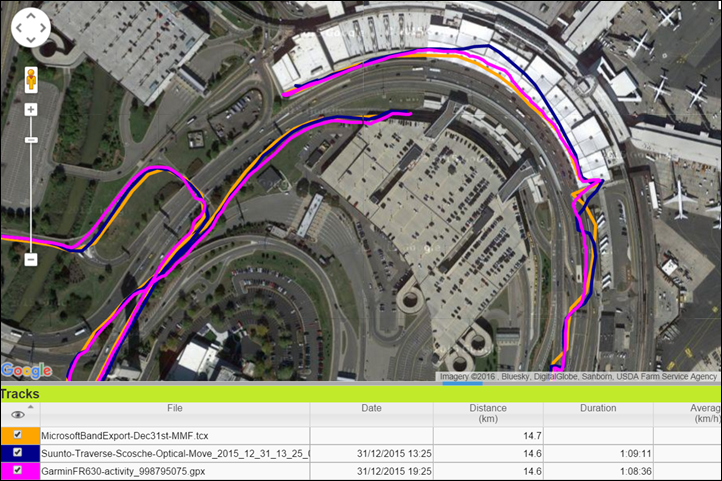

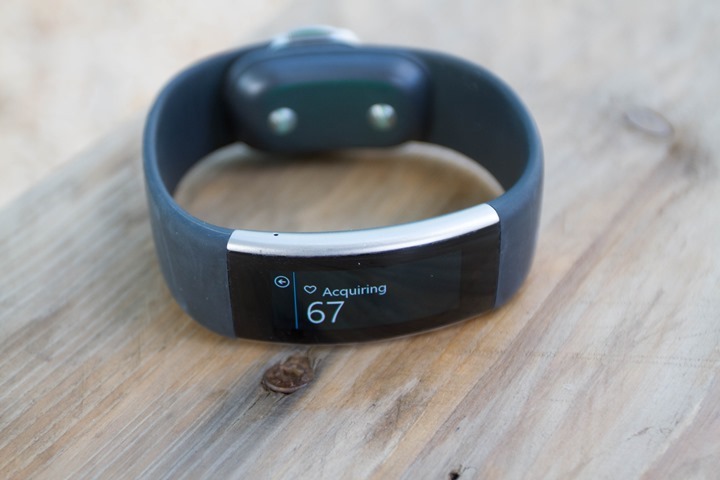

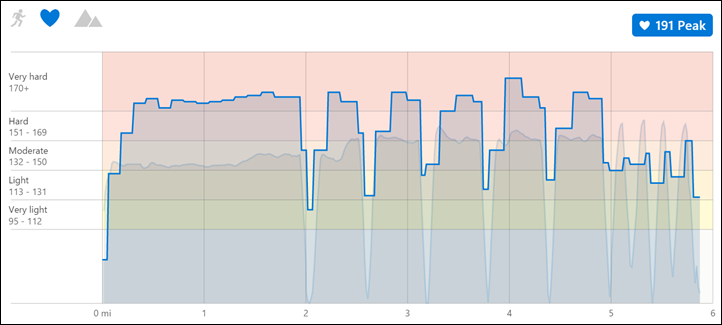

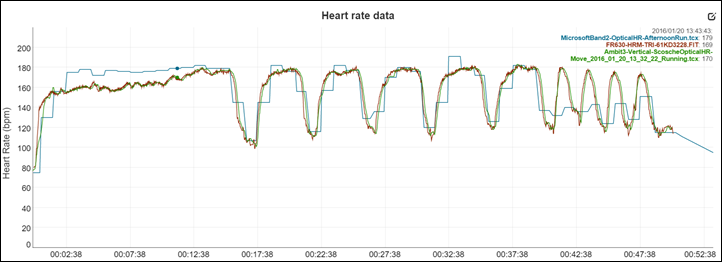


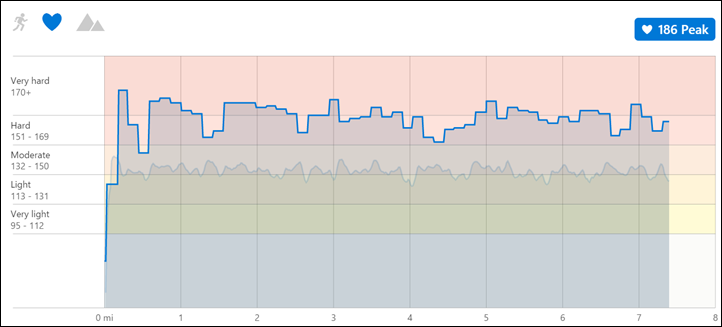
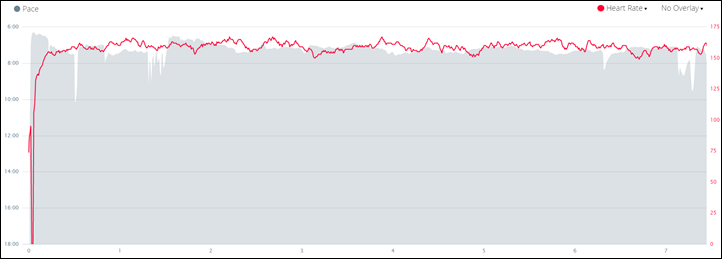
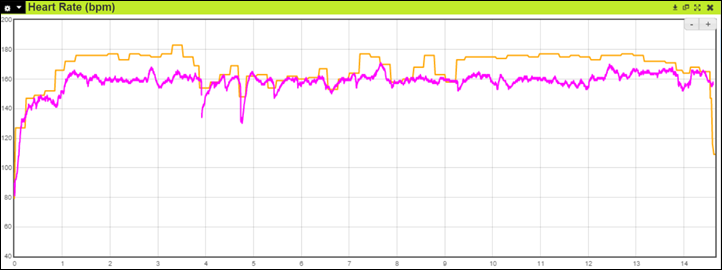

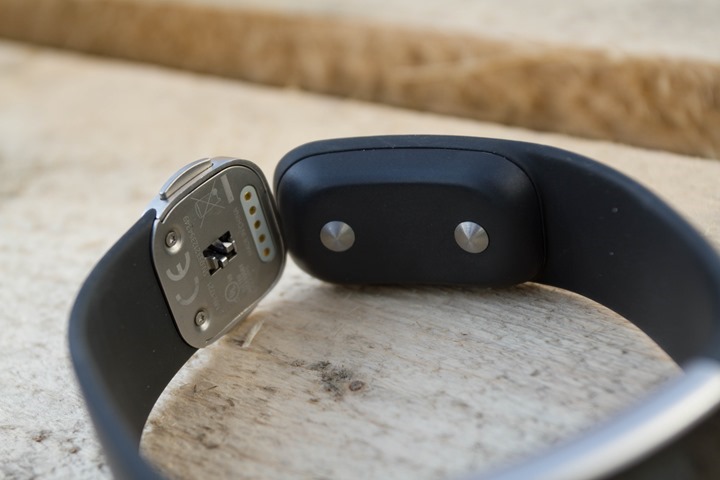



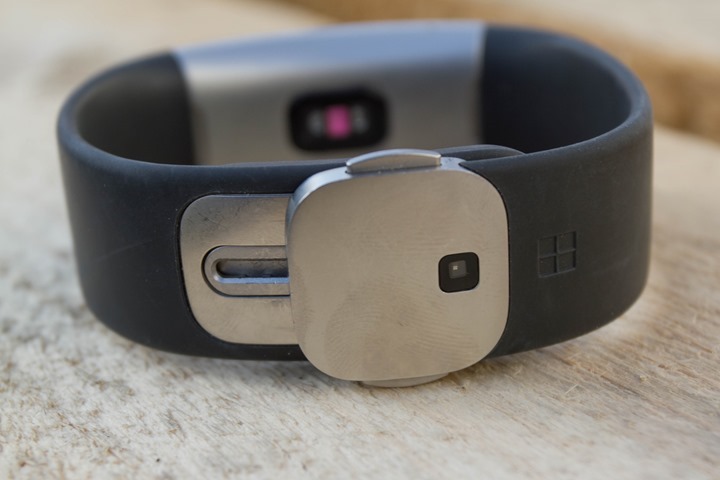
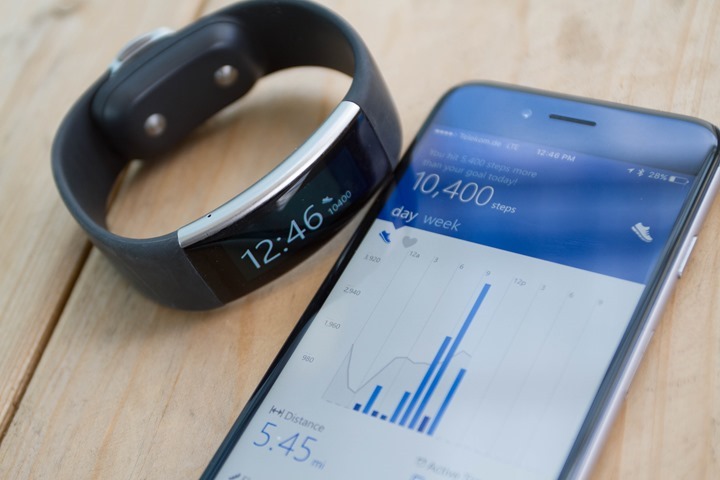
















the HR rubbish is the killer here for it.
As for HR the new release for Vivosmart is out and solved many of the issues that there were complaints about and HR when matched with Mio is spot on.
Can not see the market for this band at all.
Can you explain what you mean by “when matched with Mio is spot on”?
the HR mate, within 1/2 beats is spot on which is the key of any device, can trust both now.
The original Mio sensor that isn’t being used anymore was one of the most accurate ones out there (the Soche+ armband is the other and the Epson technology was good too)
Now that Tom Tom and Garmin are using their own proprietary sensors, they really aren’t that good for intervals — they can’t keep up.
This device seems worse than those.
If the vivosmart is matching Mio sensors, it can be said to be accurate. the best one I’ve found is the Mio Alpha 2 – it competes with a chest strap without problems.
The TomTom spark has issues, but its sensor from what I’ve read is spot on with occasional blips. The Mio Fuse doesn’t have GPS so its dead to me unfortunately. I just need something that does the following mainly:
24×7 activity tracking
accurate HR wrist based (I’m not a runner, I’m a soccer player who is interested in fitness)
GPS built in with ability to accurately track distance during games
HR zones with audible alerts and visuals when entering different zones and coaching
These are the biggies for me. Right now, I think my only choice is the TomTom Spark. Opinions?
Nice write up.
Curious – why review the MS Band? Why not samsung? why not apple?
BTW is there an Apple Watch Review coming up? Considering it’s ‘matured’ i would say a review would be insightful.
I get a surprising number of questions on the MSFT Band 2, given it has GPS, Strava integration and the like. Seems only valid to review it.
I have actually reviewed Samsung in the past.
Apple is on the short-list now (it’s back on the list, and on my wrist).
yeah, I’ve never even considered any band other than the MS band due to the GPS function since I hate bringing a phone w/ me.
Thanks Ray for the review!
(I was one of those asking for this review)
I don’t know if i would bother with the Apple Watch now Ray, you can almost guarantee the new model will get announced in March.
It will more than likely have GPS and other things that were not in the first version.
The current rumors have a new set of colors/bands/etc for the Apple Watch in March, and a new Apple Watch altogether in September. No idea if that’s true though.
Could be right but if apples history is anything to go by they don’t like to announce big products up against the iPhone
Microsoft just killed the Band. RIP.
link to gizmodo.com
Had they put Ray on that team, when there was still time, maybe there’d be a Band 3 to prop up the category.
Do you think there is any possibility that a firmware update will allow the use of a BLE HRM with the Band 2? That would solve a huge problem. And if so, in your opinion, do you think MS will ever consider it?
I got one for Christmas as a gift and actually really like it for day-to-day wear (unlike your experience, I find it rather comfortable–I don’t really feel it when I have it on). I had a Fitibit Charge HR before, but it was not fully compatible with my Windows Phone, and the HR tracking for sports wasn’t good either. The Band 2 is also nice insofar as I can perform (basic) smartwatch functions on it without actually going to my phone (e.g., setting an alarm, hanging up on incoming calls, responding to texts) the way I could not with the Charge HR. Of course these functions are all so limited compared to the Apple Watch and Android Wear, but we Windows Phones users out there don’t have quite the same options when it comes to things like these.
(Anyone with experience of a Garmin with their new Windows Phone 10 compatibility?)
Lee, yes I have experience with Garmin and their new windows 10 App on my Lumia 950.
As a long time windows phone user, I am very happy that they developed the app and it works fine with my Garmin 920XT. Notifications which were in beta are now fully implemented and work fine. No live tracking yet, but that may come.
Paul
Thanks, Paul! That opens up a whole new world, doesn’t it?
Good experiences here also with a lumia640 running wp10. I use it mainly for syncing. Not quite same level of struggle as between iPad and vivoactive, but still not as straightforward as connecting other Bluetooth devices. And great feature is that it tries to sync each time the connect app comes into focus (I don’t know why they don’t add a manual sync into the garmin app). Email notifications not all getting through (but I have 5 different accounts and during work day average more than 1 email a minute, so it probably gets lost in the deluge.)
Not yet done any iq apps loading via the lumia. Connected apps eg weather work well.
I really love the garmin vivoactive. Customisable watch face, mini data fields including current pace, ok gps, connection to external hrm (I had same problems as Ray with Msft band gen1 being 20 bpm out), very thin, very light, not sweaty (I don’t take it off as much as other devices due to irritation). I also love the battery charging (almost 1 week with daily 30 minute run with gps and hrm belt) – means it does not need to be opened up each year to replace battery to find that your watch is no longer waterproofed. Love also that garmin autonames the run with the location. Been using it extensively for 6+ months and no signs of big scratches/chips and usually do have those by now.
thanks Paul, that is good info to know. I too am a windows phone user struggling to find something that works in this area
talk about being different!
A lumia – dead and a MS Band- dead
hopefully youre not on the Black Berry phone because they just killed that too.
Hi Ray,
Just reading your review, other than it being uncomfortable as you mentioned, it sounds like the majority of the other problems could be software fixes?
Is it that the heart rate sensor is inaccurate or more that its sampling / recording rate is poor that brings it down?
I do agree, I think the majority of my gripes could be software fixes (though, many people have had the same issues since the first release).
For the HR inaccuracy, it’s really tough to know. Sometimes it can be fixed – but in general if I look at the history of all optical HR sensors out there, usually we don’t see major increases in accuracy (minor – yes, major – no).
For sampling, it hurts a lot. But that may also be in an attempt to cover up how rough the underlying data is.
I’m glad I’m not the only one confused by this product. Middle child seems quite accurate. For me it seems more to be the type of device to gather as much data as possible. MSFTs advantage could then be their software skills. I see them capable of providing actual useful feedback to the end user again through their software platform (something which other companies in this space are completely missing or just started to do so).
I snagged the Band 2 to replace my 920xt as my day to day watch. I wanted better sleep tracking, and a way to keep an eye on my HR (plus a more Windows Phone friendly device for notifications and what not), and see many of the same issues you point out. I wouldn’t recommend it to serious athletes, definitely more for the casual workout warrior set.
Regarding the UV, I didn’t see you mention the alert the tile offers. Aside from the test it does, it has a reminder, kinda like the “get off your ass” alarm to let you know when you exposed for a set amount of time. It also logs exposure with workouts.
Interesting, I didn’t see the UV alert option – that’s great.
I did find it weird though that no matter how many times I’ve done a UV test, it’s never once logged that value/data anywhere onto any of my completed history pages. :(
When the tile is pinned, open it and swipe to the right. :)
The exposure seems to get collected automatically while in workout mode… at least it is for me. Last outdoor ride I did was cloudy, shows 30mins on my dashboard.
Firstly, thanks for the in-depth review. I’ve got to say i’m pretty disappointed with the MS band 2 after reading this. It seems like they have a lot of great sensors and tech in here but they bungled the implementation and the sensors are totally useless to the user. UV and barometer being a couple.
The HR reading interval of a minute is absolutely bonkers to me. I’m hoping they can fix this in a future update. Also if it’s uncomfortable who’d want to wear it.
I think this device will have to be on my pass list.
I’m really looking forward to the Mio Slice. Right now my workouts consist of a lot of HIIT and interval training and my only optical options are Scosche and Mio. I currently use a mio fuse. Both of which are pretty dated at this point. I’d love a device with accurate optical HRM, sleep tracking, RHR, and good ecosystem in a single device. Sadly, i dont think one exists right now that is low profile that i can wear with a normal watch.
Point blank, if you’re at all serious about running/cycling, skip the Band 2. It’s pretty good for what it is, a glorified activity monitor, but it’s mediocre at best as a workout tracking device.
There’s been some chatter about issues with the HR being wildly off for other people too, but it’s ok for me. Tracks close to my strap, but it’s a bit slower to respond. Entirely possible that gets fixed with an update.
Agreed.
I guess what I don’t get is why everyone seems to be implementing optical HRM into their devices but they all seem to be terribly inaccurate(Apple Watch, polar, band 2, vivosmart hr, charge hr, jawbone 3). The only accurate ones are almost years old at this point. It’s terribly frustrating.
Ray, is there anything coming out soon with actual optical HRM accuracy for high intensity fitness?
Mio Alpha/2 Fuse and link all have perfect accuracy for sports
Mio Alpha 2 has max battery life with 20 hours, I have fuse and link and used Mio Alpha before…
I just want to collect my perfect sleep data as well as 24*7 health data and 4 days battery life wins every time with what peak offers. peak is the only one collect body heat and perspiration level other than usual stats
Yeah I use a mio fuse as well but unfortunately the app sucks. You can’t export any of the data into anything useful. It’s also pretty old at this point and all the promises mio made about updating their app never came to be.
Just hoping something new comes along. Seems like I’ve been waiting forever for a new device with mio/scosche accuracy that also has sleep tracking / continuous hr / steps / low profile.
Optical HR sensing technology simply doesn’t give better signal to noise ratio versus chest strap ECG for most people during movements.
Part of this is improved by location of the sensors, like proximal forearm (why Valencell / Scosche) is the best on market).
how Garmin FR235 battery life now? has it improved from 4 days with continuous HR on?
Surprised you havnt compared it to basis peak as it does all that much better (except GPS). though Peak is the worlds best and super accurate sleep monitor in all those hand strapped devices
I have tried MS bad for a month and when peak was sent for replacement, took me a minute to let band go the moment I got my peak back
Yeah, I mainly didn’t include the Peak due to lack of GPS (while I included Apple/Blaze, that was mostly because otherwise I’d get endless questions about it). But, I could see Peak being kinda a valid comparison.
I do find that the Peak isn’t great for exercise though either from a HR standpoint (but 24×7 and data otherwise is great).
I’ve had the Basis Peak and indeed it appears to do excellent 24/7 HR, sleep and activity tracking (I don’t ride or run, so I don’t need GPS). Plus the notifications are great (decline calls, see who’s calling, text messages, Facebook, etc etc). Sadly, I’ve noticed that is it slow to respond to sudden increases in heart rate, which seems to be a common problem with optical sensors.
I would love it if I could pair it with a Scosche Rhythm+ when exercising and let the Peak do everything else.
There doesn’t seem to be a device that does 24/7 everything while allowing you to pair it with another heart rate monitor for the tough stuff.
Maybe if Polar upgraded their software you could use the H7 for your workouts and have the other features 24/7.
Seems like it was designed by committee, with different groups working on each aspect of functionality. How anyone would think that recording heartrate at 1 minute intervals would be useful is mind-blowing. Surely they must have some athletes on staff up there.
Probably same athletes that Google has for its Google Fit division. Developed supposedly as a “me too” compared to Apple Health, but can’t even support body fat % as a metric.
If it would connect to a HRM strap I’d severely be tempted for the sleep tracking (something both the Garmin and Polar options I’ve tried have been rather laughably bad at) alone, but optical is a total no-go for serious gym work and I rely way too much on tracking heart rate during workouts to be willing to go with an optical sensor. Especially one that’s sub-par even by optical’s sad standards.
Bleh, the state of sports trackers is just sad. Limited sensor suites and a depressing tendency towards inferior implementations. I don’t get it :(.
I think the problem is that it is still early days. I think these products will improve dramatically year over year.
But that’s the problem, it’s not the early days. The MotoActv came out in 2011 and is in many ways still significantly better than anything out today.
Compared to advancements made in phones in that time, that’s just sad.
Perhaps the wretched HR sample rate is a power consumption thing. Even if the HR measurement represented 1% of the power consumption in the 1/min mode, it would be 60x greater at 1 Hz (assumption). With the current charge cycle at 48 hours, well, it seems that it’s possible that the slow HR refresh is a power saving effort. Of course, the downsampling of exported GPS data is totally mysterious. An effort to force you to use the MS analysis tools rather than the 3rd party analysis tools? If so, why? I guess that prohibiting export is bad PR, but exporting bad data is OK PR? <> I’m not a band kind-of-guy, so this is of little impact to me…
Thank you very much Ray for this review, and the comparable product comparisons as was suggested. Just a further suggestion I know was previously made also, I think you should include a treadmill test as for a good portion of your readers who live in colder climates, this is incredibly important.
Suffice to say, this band is not for me. At that price, although I wouldn’t need more than basic info, I want accurate HR tracking and clearly this band is a fail.
If Garmin can fix the FR235, I really think it would be the one for me. Appears they improved the Vivosmart HR for some of its bugs so I’m hopeful something is one the way for the FR235.
Thanks again for the time you put into this.
Great review; I was going to ask how the resting heart rate compares to other devices, but realise it doesn’t offer this feature!
I know RHR is a metric best compared day on day on the same device, but still interested in how the numbers on various devicess compare – are they the same? Have you worn two devices that offer it and got different numbers?
I know from experience the Fitbit Charge HR uses some sort of average resting HR – wasn’t sure they were an outlier? Thanks!
It actually does seem to offer a resting heart rate albeit it’s not in an easy to find location. On the health website under the ‘comparison’ tab there is a resting heart rate. Accuracy may be still be off (mine is apparently 48) but it does appear to be there.
It also appears to under the ‘sleep’ section on the smartphone app. Possibly then this figure is only recorded during your sleep and not an average across the entire day.
Interesting – didn’t see the sleep one, just added this in. Wonder why they’d put it there versus the rest of the day. Weird. Anyway, good to see (though, measured too high for me).
Thanks for the review Ray, glad I worry more about my HR than the Band 2 does.
BTW, under GPS tracking “and it really does a suburb job of tracking”, could be a superb pun for a GPS ;)
Thanks…fixed. :)
Looks like a better incremental update, keep going and by band 4 they might have nailed it. Typical Microsoft product.
Market comparison: I would be interested to know, where I can get the Apple Watch for $249.
In the states, it’s been lowered to $249 at Best Buy (though, I don’t see that at the moment). They do have Refurb ones (Best Buy) for $279.
The $249 deal was a 2015 holiday special promo.
Thank you for the review.
I was considering the Vivosmart HR and the MS Band 2 as a sleep tracker / resting HR in order to go along with the Fenix3, but alas, no item seems to do the trick.
What website/application do you use to get such nice HR graphs from different devices?
I try to find HR monitor to use during gym workout and I would like to compare my Garmin run HR strap vs Scosche. I feel they both show inaccurate reading – depends on the type of exercise, body position (standing, laying etc.).
Sorry if you have already mentioned it somewhere but I couldn’t find it.
I mean all readings on one graph :)
It’s a custom piece of software that allows me to quickly plot things. I currently have a small group of beta folks on it, trying it out, and am working to slowly expand that.
“This would be super-cool, except that the list requires a magic decoder ring, which isn’t supplied:”
In my opinion, this is your best line to date. Bravo.
I have the Band 2 and, being on a gym user, I find it much better than my Apple Watch was. It’s less “in the way” when boxing or doing Calisthenics. The ability to program my own routine is magic.
In a smart function use, it’s miles better than the Apple Watch, which requires you to lift your hand and very clearly look at the face. This is hugely insulting to whoever you are talking to and that killed it for me. I had to hand it to my wife. On the inside of the wrist, the Band is discrete. But, then I do many meetings and this is a particular use case for business people.
The final killer app for me is the sleep tracking. I have apnoea and the band does a very good job of telling me how I slept, which is vital to management of the condition.
Regards,
Basho
Good and fair review. I’m pretty happy with my Band 2 but I agree with the limitations highlighted.
For those wondering what it really offers over other trackers, it is the ability to build complicated workouts. Since this site has more of a running/cycling angle it’s maybe not that crucial to some, but I do find it pretty good. For me it’s easy to tell lmyself I’ll do intervals when running or spinning or cycling, but when you’re outside (or on the spinner) it’s so easy just to keep pace and forget about it. With the band you can build workouts with cycles that really help motivate me to do it.
E.g. spinning – 5 minute warm up – 5 cycles of 90 seconds hard, 90 seconds easy, then 5 seconds of 60 seconds hard, 60 easy, then 5 cycles of 30 seconds MAX, 30 seconds easy, then repeat it all, then cool down. That is a complicated sequence to remember, but super easy to program and then read out… I’m not sure Microsoft is being given credit for such cool functionality.
In terms of heart rate, yes its limited as are most wrist-based. I’m hoping they can add external chest strap, but as it is now, I look at it as an indicator. It does seem to pull the general trend ok.
Anyway, keep up the great work.
Good use case.
For the workout piece, I agree theirs is well executed. However, by the same token it’s no more capable than ones from other companies.
I had the MS Band 1…and took it back in 3 days…last year weeks after it came out. Never wore handcuffs but I can only imagine that’s what it feels like. And it literally drained my phone while it constantly uploaded info etc.
So I was anxious to see the MS Band 2 review…well Ray…kudos…thanks. You kept me again from wasting money. Why can’t companies get Optical HR’s right?
I’m waiting for your Apple review…but I can’t see even at discounted prices sweating all over a pricey smart watch even if it did have GPS. Which it don’t. And I really can’t bring myself to wear my $600 phone while I run. Not even sure the next rev of the Apple watch will be much better. Sweat is sweat and it ruins things period.
So why can’t companies make a runners watch that has GPS, treadmill with a shoepod if needed to make it work and also have an optical HR that actually works and is accurate?
I’m still holding onto my money…I’ve seen nothing that makes me want to spend it. AND today I hear on the local news that Fitbit is being sued over their Surge and HR Charge units since the HR’s are showing low HR and causing folks to overdo it and stress? REALLY?
Wake up manufacturers…and get it right.
Ray – thanks for all your hard work. I look forward to your reviews. As said you’ve kept me from spending foolishly a few times.
I think you mistyped the Apple Watch price. I believe its actually $349 – which puts it in a slightly different category than Band. Doesn’t change results, just sayin’
It appears the price has gone back up. Best Buy had it at $249 through the holidays and I’m pretty sure into early January as well. I’ve noted the change. Thanks!
Microsoft is running a trade in promotion:
link to microsoftwearablestrade.cexchange.com
(Why does Microsoft use third parties to run promotions so the URL looks questionable? I have no clue but it does seem very shady)
Link came from:
link to microsoftstore.com
Best Buy in PA had the Gray color/band Apple watch with the larger screen for $249 thru the holidays. I believe the sale just ended mid Jan2016. Still couldn’t buy a device at that price less GPS.
Thanks again Ray!
The SDK for the Band seems to give more functionality then ConnectIQ:
link to developer.microsoftband.com
(The SDK gives access to RR interval times when the user is at rest, so an app like Ithlete would be possible)
I thought Connect IQ did give access to RR/HRV? Isn’t there an app out there already?
I was referring to the SDK as a whole seems more powerful on the band and less memory pressure restrictions. The band is a much higher power device hence the shorter battery life
As to rr time I think you need to use a raw ant+ connection to the hr strap to get that data
The UI, app, and device options seems to be way ahead of Garmin or Suunto. (Have no experience with Polar)
It’s tricky. If you look at UI’s, then you’ll find the Apple/Microsoft/Samsung crowd generally ahead in terms of ‘pretty factor’. No doubt, it’s pretty.
The challenge is that pretty factor is basically a blowtorch on battery life. Hence why Apple Watch is about 36 hrs, and Microsoft Band at about 48hrs.
I’ve also found that while the prettier bands are great for day to day usage (more than a Garmin/Polar/Suunto), that when it comes to sport use (i.e. a hard interval), they tend to be finickier due to the not-as-awesomely implemented touch screens.
Just my two cents.
I agree. My Suunto ambit Peak 3 is prob the worst in terms of UI and looks but the main reason why I love it is because of the awesome battery life.
Putting “pretty” bits on screen doesn’t give you 36h vs. 48h delta in battery life. Chipsets, screens, radios, BTLE, Wi-Fi, app push/sync/notification, etc. features do. And especially: relative battery size / life (x mAh vs. y mAh.)
I wasn’t referring to 36hrs vs 48hrs. I was referring to 36/48hrs vs other units with identical non-screen specs being at 3-7 days (i.e. Vivoactive, Vivosmart HR, Fitbit Surge, etc…).
I know on Windows Phone you can get an app called Band Sensor Monitor which looks like it might save the heart rate more often than once a minute. It would show if the heart rate recording is rubbish and the lack of sampling is trying to hide it or if Microsoft are just stupid for sampling every 1 second during an activity but averaging it over a minute.
I could do the test myself my Band 2 has just failed!
I have a Fenix 3, so I use that for most things, but have played with the Band 2, since I had a Band 1 and they replaced it with a 2 in a Microsoft store, since I was placing a warranty claim (was on-sale for the price I bought the 1 for).
It would be nice if they sampled better, I have not check outside cycling, because it is just too cold for that.
I found outside running the average HR is usually within 2-3bpm for me, Max HR has been a little high a couple times. Cycling indoor, average HR has pretty much been within 2-3bpm of the Fenix 3 also.
I was surprised at the the GPS accuracy also. Obviously the Fenix 3 will still be my default watch for running and cycling, but fun to play with the Band. Will have to give the golf stuff a whirl in the summer.
I think you forgot to mention, Ray, that neither the site nor the app allow for setting heart zones. Which makes useless the calories count and effort / recovery time. Or I wasn’t able to find that feature, at least.
I think it’s fine for running, okay for a recovery ride (like 1 or 2 hrs), useless for training and unfit for a ride with friends as the battery lasts 3:30/4hrs with hr and gps on.
I find it quite comfortable, very addictive as for the sleep monitoring, and if you pair it to a MS phone the integration with Cortana is supercool. Also, commanding music from the band is a nice touch (although not so useful, especially because a plus is that you can just put on the shoes and run, leaving your phone at home..).
VOMax is based on speed / hr. I’m not very confident about the algorithm: I’m untrained now and it states I’m strong..
Had no problems with altimeter so far.
A minus is the material of the band: it gets damaged and gets gray soon. After two months it aged quite a lot, and I don’t think it can be replaced..
All in all, a nice product with top spec features for the geek self, but with an incredibly poor software platform behind for the spot oriented one.
Hi Ray,
Can you clarify the HR sampling details for me ? You mentioned sampling rate at 1 minute intervals – is this purely for the graphs produced ? Does the device actually take readings every second but then averages it out to give a 1 minute average and the graphs produced are based over that ? This would imply that away from the graph the average and peak HR values would still be correct and the calorie burn would still be correct (based on the algorithm(s) that they have used) ?
Myself and my partner both have Mio Fuse trackers currenty and they are extremely good in my opinion (with recent addition of sleep tracking and modified algorithms for daily tracking). However, there is functionality on the Band 2 which looks interesting and makes it appeal. For my partner – the main attraction is the GPS being built in – currently she wears her Garmin FR and Fuse when she runs (one for the GPS / distance and one for the HR – which is broadcast to the Garmin). She would prefer to not have to wear 2 devices.
However, we both do alot of weight training, spinning and fitness classes alongside her running and our cycling, so the device needs to work well across a range a varied activities.
The Band 2 looks interesting – but your HR comments have certainly made us pause in looking further at this device as things stand.
Cheers !
What Windows Central said about the Band v1 link to windowscentral.com is below but I don’t know if was changed for v2
Microsoft Band heart rate sampling frequency
Exercise modes (Run and Workout): Heart rate records every second
Sleep tracking : 2 minutes on, 8 minutes off. Repeats throughout duration
All other times : 1 minute on, 9 minutes off, and repeating the cycle
Manual: You can force-check your heart rate at any time by tapping the Me Tile
When the Microsoft Band is just being worn under regular conditions, users can expect ten-minute intervals for heart rate data collection, which is six data points an hour. During sleep, the heart rate monitor is working slightly harder, taking a longer periodic sample.
Finally, during exercise when the user puts the Band into Workout or Run, the Band goes into a high-performance mode collecting a user’s heart rate once every second.
I fooled with this in a mall kiosk. The screen is really nice. Very responsive. A lot of tech in there.
but it felt like a very stiff bracelet. And I’m not sure I would like to wear it all the time.
Thanks for the short comment about the upcoming Moto 360 review – looking forward to that!
I tried the VSHR and Band 2 at the same time when I was looking for an upgrade for a broken Vivosmart. I chose the Band 2. Out of the devices, it matched the best with HR data from a much more accurate device. I did notice, like you, that it lags behind (polling rate of 1 minute can do that). So my workout “averages” were usually pretty close, but the peaks would be different. It was also subjective to interference (losing the heart rate, under reporting) depending how I wore it – I found wearing it really cinched down further up my arm allowed for the best results. It also does a good job at tracking ice skating / hockey, which most devices fail at.
What I Like:
– Form factor / aesthetics
– Accurate enough for my needs.
– Comfortable enough for me.
What I think needs work:
Much like the Surface Pro line, Microsoft has gone to the modern “iterate quickly, release rapidly” approach. So this device’s potential is hurt by it’s immaturity in many areas. Also like the SP line, I think it’ll be version 3 or 4 where it starts to shine (SP1/SP2 weren’t all that great). Such as:
— No shifting step goal (stays at what you set it at)
— No rotatable screen. The FormFactor screams for it.
— Notifications are not bidirectional. So checking it on the phone doesn’t clear it from the band. “45 new txt messages” .. No, not new, just not “dismissed”.
— Badly needs rapid charging (charges at about 1.1% per minute), I thought it had it, along with some other people, but according to Reddit, might have been disabled last update.
— Lacks some key metrics. Sure steps are fine, but with all of the sensors, why not provide a more health based metric? Garmin has their ” intensity minutes ” and Nike had their fuel points. Why not use the HR data, workout data, sleep data, and step data to give a comparable score? Walking 5000 steps in a day is not the same as running 5000 steps in a day. A score system would show that, otherwise it looks just like 5000 steps in a chart.
It’s a nice device and purchased at $199, was priced right for a hybrid smartwatch/fitness-band. However, as I mentioned, the immaturity of it keeps it from excelling at either of those applications. It feels incomplete.
Hopefully Band3 brings about some form of waterproofing, at least 3-4day battery (or working rapid charge), and a polishing of the odd bits that don’t seem complete versus the competitions offerings. We don’t need more sensors, we need the ones that are in this thing to find a use.
A very fair review, Ray.
I bought a Band 2 but sent it back today. I had two real problems with it: 1) HR is absolutely all over the place; 2) Data integration with / from other sources is lacking.
I am baffled by the marketing of this device. It talks about calculating VO2max, something which only pretty serious enthusiasts will want, and yet HR recording at high intensity levels is completely unreliable and you cannot solve this by pairing it with an external HR strap (which I would have thought would be a fine solution).
Integration with Microsoft Health is also very much hit and miss. For example it sends sessions recorded on the Band to Strava but won’t read better recorded activities from Strava. I couldn’t find a simple way to send more accurate data recorded on other devices to Microsoft Health so that it, and the Band,contained a full picture of my training. And it doesn’t write to Health Kit so it can’t help build the full picture there…
TL/DR Both the hardware and software are not good enough.
You should test Sony Smartwatch 3 (SWR50). It’s Android Wear and has GPS built in.
The same question in Vivosmart topic – not sure if you check you out still, so posting here as well:
I wonder – do they even make HR wristband HR monitors WITH HR strap support?
I’d love to have a 24×7 hr monitor with sleep / day-to-day activity monitor and be able to use my garmin strap when going cycling/gym.
I could switch from wristband monitor to forerunner while gym, but that’s a bother – syncing the data etc. (seems unneccesary also).
Ray – any thoughts what might be a fit my needs? Vivosmart seems ok, so does fitbit charge HR…
what is the tool when you use to load multiple GPX files
and what is the tool when you use to show different HR data?
Thank you
It’s a custom tool I have. Though, I have been slowly opening it up to others to beta test.
Hi Ray, you can export all data from the Microsoft Health Dashboard. It’s hidden under the ‘profile’ menu in the upper right corner. Just click on your name and you will get the option to export your data!
Yes, but as noted in the post – that just exports a list of activities. It doesn’t actually give you any meaningful data (such as the activities itself).
I’m glad I bought my Band 2 before reading this review. I don’t think I would have it if I had read this first. I am very happy with it. I was worried about comfort since I had read several bloggers complaining. I kept the receipt. It took 3 months to get used to my wedding band. I have never been bothered by my band 2 day or night. I charge it driving in to work 35 minutes and that’s all that needed. I go to the gym 4-5 times a week and run/bike outside in the summer. I am not an elite athlete. I never worried before about exporting every second of HR data. I know it measures every second while exercising but only uploads an average of each minute. Maybe it will bother me now I don’t know. I have improved my sleep quality. I have informally tested my HR at may times the old fashioned way and always found it to match what my band reports. When I look at my guided work out details I see the name of each exorcise with HR and cals nicely laid out, no decoder required. I like flipping my wrist for texts and email to know weather to pull my phone out of my pocket, or to see the weather news etc. Occasionally it misses a flight of stairs I have climbed but never counts extra?? Step counting is bang on even when I am on the elliptical machine and holding the lower bars (not sure how that works.) Never counts steps while typing or washing dishes etc. I think the quick videos in the app and on the web are excellent for each exercise, I’m not sure what my band could really tell me if i din’t now how to do an exercise.
In shorty it may not be right for you and other data hungry fittest nuts but for me it does a good job tracking me while providing the essentials of a smart watch. Not sure what else I want on my wrist.
Seems like my options are limited to a decent 24/7 RHR monitor or a decent workout HR monitor but I can’t get something that’s good at both. Is there a way to utilize something like the scotch rhythm + for workouts/high accuracy needs and link it to a Fitbit or Garmin 24/7 HR monitor?
Tomtom spark cardio?
Indeed, the situation is a little grim. The Under Armour UA band seems to be the only option, but it’s not out yet. The Polar A360 can connect to an external monitor, but it doesn’t do 24/7 RHR.
I guess a Garmin Forerunner 235 & Fenix3 HR would work too as long as you have an ANT+ heart rate strap (or Scosche Rhythm+).
Hi Ray – This whole smartwatch / GPS watch / activity tracker muddle has me really grasping for what I need. Any recommendations for my situation?
After a year off, I’m getting back to the gym/running. Last year I was doing 5k’s about 1/wk, with some 10k races thrown in (I’m not a serious competitor). I intend to get back to about the same activity level.
I OWN a garmin 210 (w/Heart Rate strap). I like it except that attaching the charging the thing (attaching the charger) is like rocket science, and it can be a bit glitchy when it wants to connect or be charged.
BUT I’m looking for a day to day activity tracker and a sleep monitor to motivate me as I ramp up my routine.
Would you recommend supplementing my existing 210 with a lower end activity tracker ? Or bite the bullet and trade up? Or perhaps now is one of those times when it is best to wait and see how the market shakes out?
For my activity level, I think I could afford anything $300 or lower (Cdn$, so let’s make that $250 US!) – if you have any specific recommendations for me to look into further, that would be helpful.
Thanks in advance for the advise!
BTW, I love your site.
Sadly, $300 is more like $215 USD at the moment. :(
Thanks for another great review and comparisons. I have had the Band 2 since it came out (pre-ordered from Microsoft Store online) and have been extremely happy with it since. I am a competitive cyclist who hates to run. In the falls/winters in the northeast, I spend most of my time on a trainer inside and in the gym doing core workouts getting ready to race in the spring. I haven’t used the GPS features extensively yet.
I would agree with most of review and comments (I haven’t found the Band 2 to be particularly uncomfortable). There are however a couple of things that I would correct.
– Gym workouts are uploaded to strava
– UV sensor does trigger alerts without manually checking (it might not record it but I have never looked for it either)
– Resting HR is stored in your sleep tracking (that is the most appropriate time to measure it)
– You mention a couple of times that you can only use a “handful” of tiles at one time. You can pin 15 to the band at any time (which is more than enough – who wants to scroll that much on your wrist band?)
– The additional features that come with using it with a Windows Phone are very unique to a fitness band (Cortana, actionable notifications, reminders, etc). You cant get that with anything short of an iWatch or Android wear watch.
None of that changes the fact that it is not great for serious training, but then again nothing else in this form factor is.
Thanks again for the review
Hmm, I’m wondering if your using it with the Windows Phone is getting you more tiles. When I tried to add more than basically just the default sets – I couldn’t. Far less than 15 tiles.
As for Strava, my gym (specifically structured trainings) don’t end up there. Indoor cycling, indoor running do however. Though, I’d note that others have reported flakeyness with the Strava integration as well (workouts missing). Perhaps there’s some bug causing issues there.
As for resting HR, it’s actually an interesting debate. The reason is that some health folks believe it shouldn’t be measured during sleep, while others say it should. For me, it’s about a 1-2bpm difference, so not substantial – but worthy of note.
Ditto Frank: Great review, Ray.
As with Frank, with my Windows 8.1 phone, I can pin up to 15 tiles on the Band at any one time; and the UV exposure does show up automatically both on the Microsoft website in the various sections (such as run, steps, bike, etc.) and the phone app, though.
Very interesting review. I got a band for Christmas and had wondered about how accurate the measurements were. I’m not an athlete, but I try to keep fit by running and using the gym. I golf a lot though and that’s the main reason I wanted the band over other trackers. I don’t think any one golf device offers everything the band can track golf wise.
I’m curious about the HR tracking. It seems this is very important to everyone here. For just a casual fitness user is it that important? Does it perhaps impact calorie count? I’m wondering if for someone like me who isn’t training for anything should care that much about it.
Hi, and thank you for the review.
The poor data export is a bummer. And more surprisingly was that the tracked gps data was not converted and displayed as speed. Almost unbelievable.
Have been waiting, here in Europe, for the band 2, but after this review of yours my interest is falling. Would like to replace my phone with something more handy when running.
On Windows Phone you can get a app called Band Sensor Monitor which can read the sensors. I’ve plotted the heart rate from the band (in orange) against my Garmin 920xt with a HRM-Run (in blue) over a 10 minute period. The app does have a few drop outs but I’m not sure if this is due to app itself or the Bluetooth connection to the band. You can see that it sometimes tracks okay and at other times it is all over the place
maybe your chest strap is crap :
link to youtube.com
Unfortunately, while I generally like T3’s work, this was a flawed test.
The reason is that the easiest possible thing you can do for an optical HR sensor is a slow ramp test. They basically did a VO2Max test, which is silly easy to pass because the changes are gradual. Virtually everyone passes that, unless a unit gets mixed up on cadence (or interference from other units).
Then, they took the HR average. Which is next the worst possible way to measure accuracy. I can be off 100% of the time, and still get the average correct.
As for my chest strap – my tests all have multiple HR sensors within them (not just two)…so…no, not crap. Of course, all of that ignores the fact that the main issue with the Microsoft Band is the recording rate.
Ray, I’d like to throw my thanks into the pile. Your reviews are excellent, and I appreciate the unbiased views. I’m starting to rely on them to moderate my gadget acquisition hunger!
I was eagerly awaiting the release of the Band 2 as an upgrade from a Garmin Vivosmart, and bought one shortly after it hit the market (before your review was posted). I’m used to running and mountain biking with a chest strap or Mio Link, and wanted something that would combine the devices with a GPS tracker.
I ended up returning it because of the horrible HR accuracy. I thought I was doing something wrong at first that was resulting in the low sampling rate, and was shocked when I worked out that was the best it got. I tried wearing the Band in all kinds of positions and orientations to see whether placement was an issue, but I never got anything close to an accurate HR recording.
I could probably have lived with the discomfort and the downgrade from the Garmin app and website, but along with the hardware issues there were just too many compromises. I’m hoping the Garmin Vivoactive HR might hit the sweet spot!
Great review; I find most of what you say to be accurate. However, for HR, I simply tighten the band one click (snug, but not tight), and it seems very accurate. BTW, I’ve talked with others for whom this trick works, as well (Band 2 and Apple Watch wearers). Totally agree about the useless reporting of heart rate, though…once per hour; are you kidding me??? But that is something they can fix without folks buying new watches (also hoping for a display option that reads in the same direction as a watch instead of 90 degrees off).
Playing with a band2. Find that my resting HR totally confounds the optical hr monitor.
My resting hr is about 34, the band2 seems to double it and report 68… useless!
Anyone else have this problem?
There is an app for Windows 10 that let you export to gpx files. I think now also exports to tcx.
Here is the link: link to microsoft.com
Do you know how long battery life is with GPS on? Would it last for say a 6hr marathon or should I tell my wife to run faster?? :)
Depends on how much detail you want. I tried a 4 hour ride with GPS saver off. Battery died at 3.5 hours on a 100% full charge. Pretty pathetic. The data acquired with GPS saver on has such a low sampling rate, it’s virtually worthless.
Under no circumstances, should you buy this device as your fitness tracker/smartwatch. The software is great but the hardware is poor at best. I purchased My Microsoft band in December of 2015 to use for running, biking, golf and the guided workouts(which I thought were great) but I quickly learned I had just thrown away $250. About a month into using the band, everything was going great until the band would no longer charge. I tried charging in multiple outlets, direct to my computer’s usb, bought a second charger, everything. It would not work. I was barely within my return policy at Best Buy so I exchanged it for a new one. No problem. Well about a month and a half later, here we go again but with a new issue. There was the slightest crack in the physical “band” of Microsoft band which was fine until it slowly grew bigger and bigger. I contacted Microsoft Customer Support which was a nightmare, received a shipping label, mailed it in and received a new band under warranty about two weeks later. Other than being without my band for two weeks I was ready to chalk it up to bad luck and move on until yet again, about a month and half later I run into another issue. This time the metal plate that covers the charging port fell off in the middle of a run. It caused the clasp to come undone so immediately noticed and picked it up. I again contacted customer support, the emailed me a shipping label and I sent it off. This time however, I received a box 10 days later only to find out that Microsoft would not repair or replace the product due to “abuse”. I took amazing care of this band. I never showered with it, hit it on things. As a matter of fact, I “babied” this thing only to be told that I had abused it and voided the warranty. This is a poorly made product. It looks great in most of the reviews but I’m warning you, if your experience is anything like mine, you will be truly disappointed. Take it from me, and skip this one. Do some more research on the Garmin or Fitbit products.
Same here. The band doesn’t charge. Microsoft know about this issue.
And the big problem: bought in Dec, when I went to USA in vacation, I’m from Brazil. Microsoft doesn’t send another band for me here.
Now I have a great paperweight that cost to me U$ 250,00
And this year I don’t have plans to go to USA….
I really like the band to my workouts at the gym and the smart notifications. But the HW quality sucks.
I agree that hardware quality is an issue. I really liked the software and the heart rate monitor didn’t seem any worse than other wrist-based monitors. My band’s metal bezel that surrounds the slot the band locks to began separating from the band during a run. Eventually, it peeled away along nearly a third of it’s length. Microsoft denied the warranty replacement for abuse of band. Like you I had babied this band. I took great care to keep the dreaded split from appearing on the band.
I bought a Garmin Forerunner 235 which is on sale this week. I hope the 235 is more durable.
Would the Microsoft Band be useful in tracking fitness on stairmaster workouts? If not, what would be?
Thanks very much for your great review. Since Band 2 is going on sale, I’m interesting in buying one. However, one question I would like to ask, if Band 2 is possible to take lap/split time manually when in Running mode using GPS. Thanks very much!!
I wanted to love this watch and I probably would have but I’ve had mine 3 months and had to send it back to the company twice b/c it stopped working on me. I’m sorry but if I am going to spend this amount of money on something I want it to be reliable.
I bought the Band b/c it was a good price, a pretty good looking form factor and it had GPS and HR. After using it for about 2 months, I think I’m going to switch to something else.
3 major issues for me:
The biggest problem for me is the GPS. In many cases, it take 5+ mins to find the GPS signal even if i’m doing the same route as I’ve done before. I live in Chicago and like to ride to work and back (5 mi each way) and want to track that activity. On the way to work, it takes some time, but usually picks it up. On the way home, I assume bc I’m amongst tall buildings, it can’t find it and in a few cases still hasn’t found it once I’ve gotten home and am away from the buildings. It will allow you to start before it find the GPS, but it starts tracking time with no distance and averages that 0 distance time into the overall average speed. So, if it picks up the GPS halfway to work and I was going to average 16 MPH, it’ll tell me it was 8 and I only did 2.5 mi. Odd.
I tried it out on the golf course a few times and it’s OK, though my cart had better info/GPS so the watch wasn’t really adding anything. I also really couldn’t read it in the sun despite being on a bright setting. Basically makes it impossible to use in the sun.
Few more minor issues – the fit isn’t particularly comfortable w/ the big bulge under the clip. The battery doesn’t last 2 days as it says. The interface of the app isn’t great. Finally, the orientation of the watch being sideways makes it difficult to look at.
I think Microsoft made a good effort, but too many issues. Particularly the GPS quality. That’s a killer. I’m probably going to get a Vivoactive HR. Gotta assume Garmin makes quality GPS.
After nine months with the msft Band 2 I would have to say a great concept, but poorly executed.
HR – I have to back up the general comments, widely out at times.
Battery life for any endurance cycling is too short when using GPS, even with the updated battery saver mode.
VO2 max – still waiting for it to calculate this, despite umpteen resets.
Durability – My first unit went back due to sweat corrosion attacking the charging contacts. My second is about to go back as the strap has split.
The good:
pretty comfortable
Cortana / Windows mobile 10 integration etc is great.
Overall I would avoid.
I just came upon this review while looking for a future replacement for my Band 2, as I’ve recently read that Microsoft is discontinuing this product. I am really sad, because I absolutely love this device. Perhaps my needs are different from many of you, but I purchased it to track my sleep, to use as an alarm (great feature), for the GPS (I am a runner and walker – love the explore app) and for the feature where I can be guided through a workout with only my watch. I have found the heart rate tracker to be very spot on, though I don’t need a second by second rate, and as far as comfort goes, after wearing it for a few days I don’t even notice it. Initially I hated the horizontal display, but it makes sense when you wear it with the display on the inside of your wrist-it’s also easier to manipulate the buttons that way. The work out feature is wonderful, and I’ve used it for running programs, for predesigned workouts and for designing my own workouts. I think this product is great, and I will sorely miss it when it’s no longer available…if Microsoft continues to support it I will probably buy another one so I can continue to use these features.